That disastrous pope who loved the arts. What the exhibition on Urban VIII at Palazzo Barberini looks like.
Seventeenth-century Romans did not hold Urban VIII in high esteem, despite the fact that even today traces of his pontificate can be found scattered all over Rome, and despite the fact that the twenty-one years of his reign, from 1623 to 1644, are presented as a period of “extraordinary cultural ferment” by the exhibition that the Gallerie Nazionali d’Arte Antica is reserving for Maffeo Barberini on the 400th anniversary of his election to the throne of Peter(L’immagine sovrana. Urban VIII and the Barberini family, curated by Flaminia Gennari Santori, Maurizia Cicconi and Sebastian Schütze). It is true that this was an incredibly vivid period for the arts, letters and sciences, which found themselves at the center of the propaganda project of the longest-lived pope of the 17th century. But it is also true that, from a purely political standpoint, the twenty years of Barberini’s rule represented a disaster for the Papal States. To understand how much the Romans loved Urban VIII, one might take up the words of the Flemish poet Theodor Ameyden, who reported, as an eyewitness, what happened on the morning of July 29, 1644, the day Urban died: the announcement of the pontiff’s departure was made at a quarter past eleven, and by noon his statue no longer existed (the reference is to the one, in plaster, that had been present since 1639 in the courtyard of the Roman College). But even more effective is a satirical invective, anonymous of course, found in 1928 by historian Ludwig von Pastor: the author of the biting verses, a contemporary of the pope, proposed to put as an epitaph to his funeral monument the couplet “Quam bene pavit apes, tam male pavit oves,” or “As well he fed the bees, as badly he fed the sheep.” There, in these two admirable verses is all you need to know about how contemporaries viewed the pontificate of Urban VIII.
“So well did he feed the bees”: one can read there both references to the inordinate nepotism of Urban VIII, who was able to set up an extensive and ramified system of familistic appointments (to give an idea of the extent of the phenomenon it will suffice to think that the term “nepotism” was invented precisely during his pontificate, even though it was a malpractice in force for some time). The bees, it should be remembered, were those of the Barberini family coat of arms. Eleven members of his family were appointed cardinals by him, three of them close relatives (his brother Antonio and nephews Francesco and Antonio), and estimates reported by historian Georg Lutz, one of the foremost experts on the Barberini pontificate, calculate the value, in rents and capital, of Urban VIII’s concessions to his relatives at about 30 million scudi. Or one can also read into it the pontiff’s propensity to brand the entire city with artistic enterprises that fed the capillary machine of his propaganda, despite the meager results in terms of Realpolitik. “How badly he fed the sheep,” indeed. The pontificate had opened immediately with a bitter disappointment, with the failure of the mediation between France and Spain in the complicated issue of the war in Valtellina, and with the troops of the Papal States who, sent on a peacekeeping mission as we would say today, were driven out by the French. Agreement between the French and Spanish was reached three years later, in 1626, but without Rome’s involvement-a clear loss of international prestige. Better went with the war of succession of Mantua and Monferrato, which was resolved with the victory of Charles Gonzaga of Nevers, supported by the French and Urban VIII himself, with the result that the alliance between the Papal States and France became closer. However, the state coffers had suffered: the pope had spent huge sums to defend Rome, in fear (unfounded according to Lutz) that in case the war turned bad a sack of Rome like that of 1527 could be repeated. And if Rome managed to emerge substantially unscathed from the Manzonian plague of 1630 thanks to very effective public health measures, probably the most advanced in Europe, the pontificate, already tried by the costly maintenance of Urban VIII’s diplomatic ambitions (extraordinary tax impositions had been necessary to finance his war ventures: in the 20 years of Maffeo Barberini’s pontificate, 63 new taxes were enacted and the public debt doubled), embarked in the unsuccessful venture of the Castro War, sought and obtained by the pope, who, boasting credits from the Farnese who ruled the Duchy of Castro, had the rival state occupied in 1641, but suffered in turn the invasion of the Farnese who occupied Acquapendente and threatened to push on as far as Rome. The peace, signed on March 31 in 1644, restored the situation to what it had been three years earlier, but the war had by then dissipated the papal treasury. And as Lutz pointed out, “it remains difficult to calculate the losses of political, military and moral prestige that the Apostolic See suffered in Italy and Europe in this conflict begun with exorbitant lightness and irresponsibility.”
The war would later be resumed with Urban VIII’s successor, Innocent X, who reopened hostilities in 1646 and won the war three years later, moreover ordering the razing of the Renaissance city of Castro, of which only a few ruins remain today. The prestige of the papacy, also abetted by unrestrained nepotism, had been “totally ruined” (so historian Alexander Koller) by Urban VIII. And, as if that were not enough, we still associate his pontificate with the indelible stain of the trial against Galileo, but also with the devastation of the Pantheon, whose ancient bronze entablature was melted down in 1625 to make cannons from it for Castel Sant’Angelo (“Quod non fecerunt barbari, fecerunt Barberini”): behold then, before the very strong discontent over direct and indirect tax impositions, the Pantheon episode had marked “the first, admittedly early, condemnation by Romans for an act considered sacrilegious of the memory of the Urbe,” as Maurizia Cicconi writes in the catalog of The Sovereign Image. All this in spite of the fact that in 1623 his election had been greeted with the best auspices: at the time Maffeo Barberini was a sort of outsider, strong in culture and humanistic training, much younger than the cardinals who were usually elected to the papal throne, and eager to show closeness to the city, to the Urbe, right from the choice of his name. Of a completely different sign, however, were his achievements in the field of promoting the arts. In this sense, the pontificate of Urban VIII, as Sebastian Schütze effectively summarizes in the exhibition catalog, “marked the decisive phase of Baroque art with key projects, such as the decoration of the new basilica of St. Peter’s and the erection of the Palazzo Barberini at the Quattro Fontane, and with the rise of Gian Lorenzo Bernini and Pietro da Cortona,” as well as numerous other artists, men of letters, collectors, antiquarians, poets, scientists and intellectuals who “contributed to the establishment of Barberini’s Rome as the grand theater of the Baroque and the absolute model for the last great universal style.”
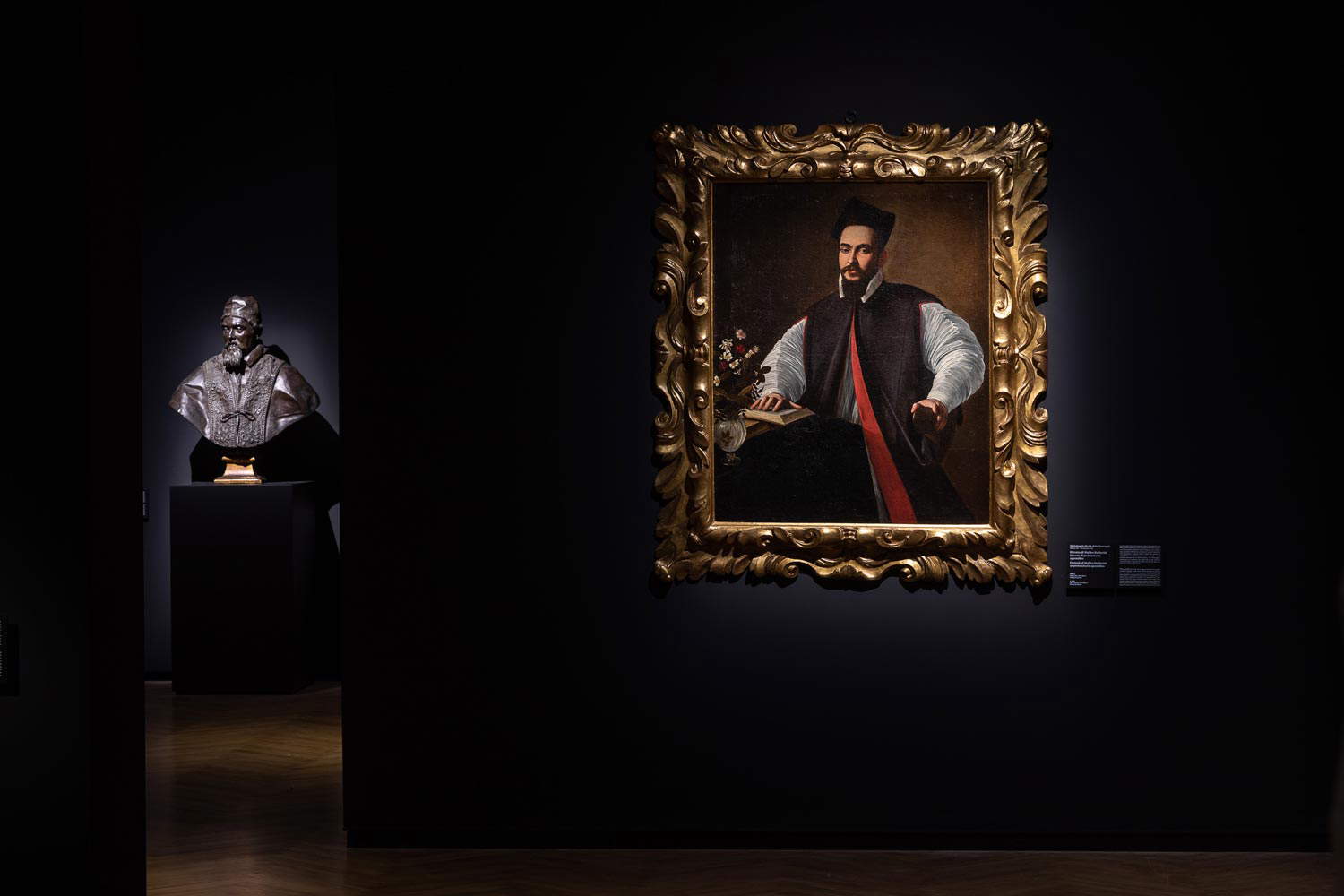
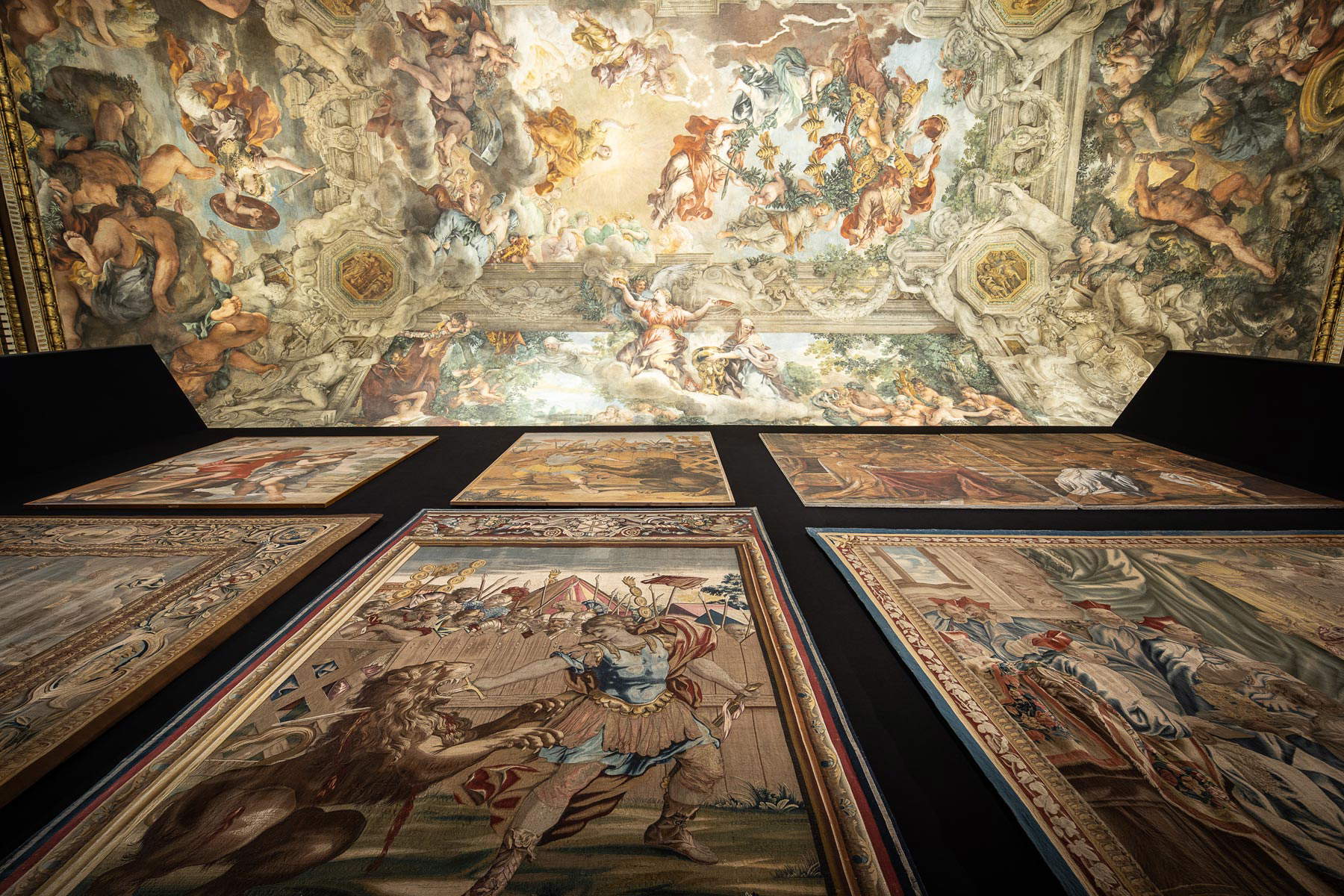
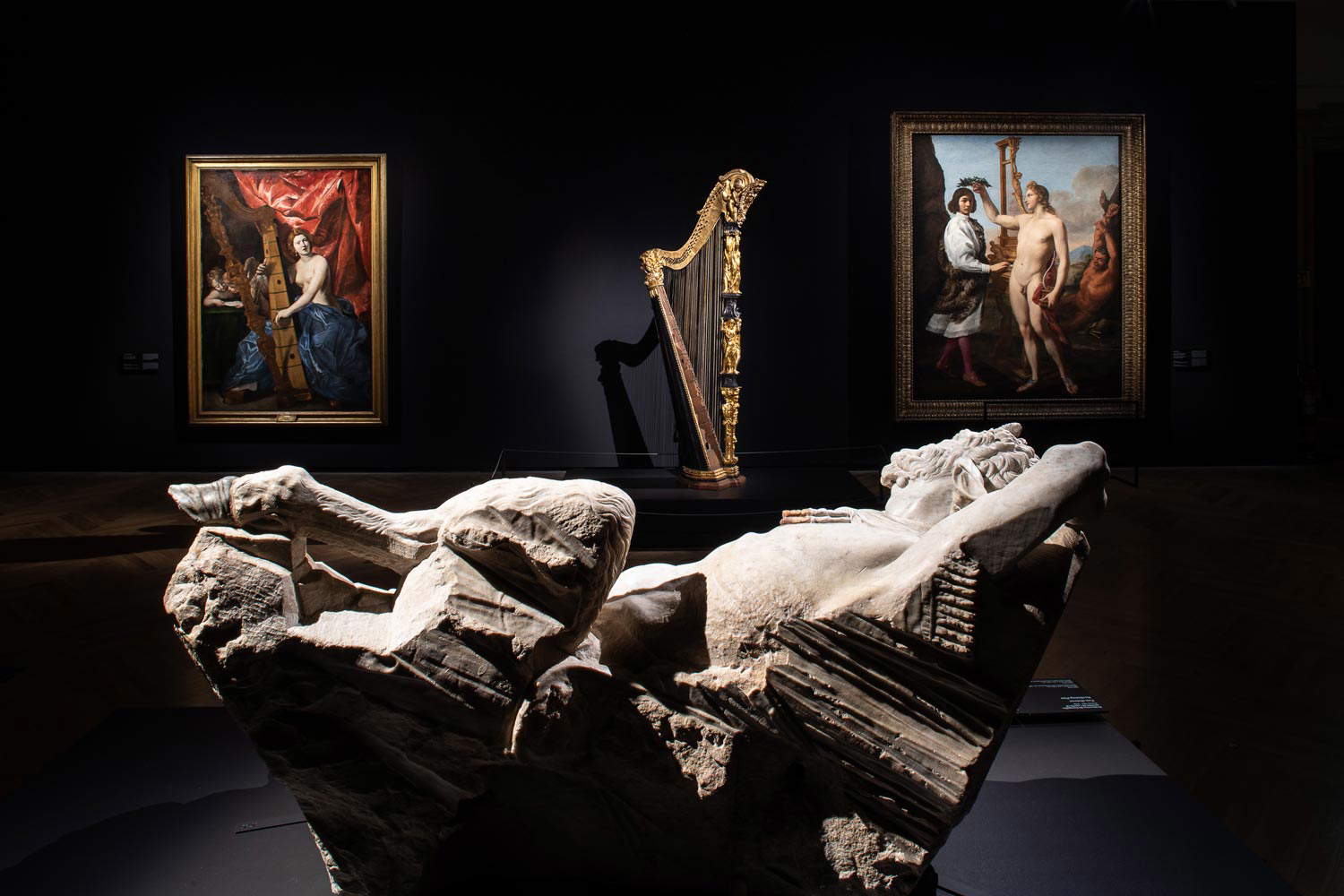
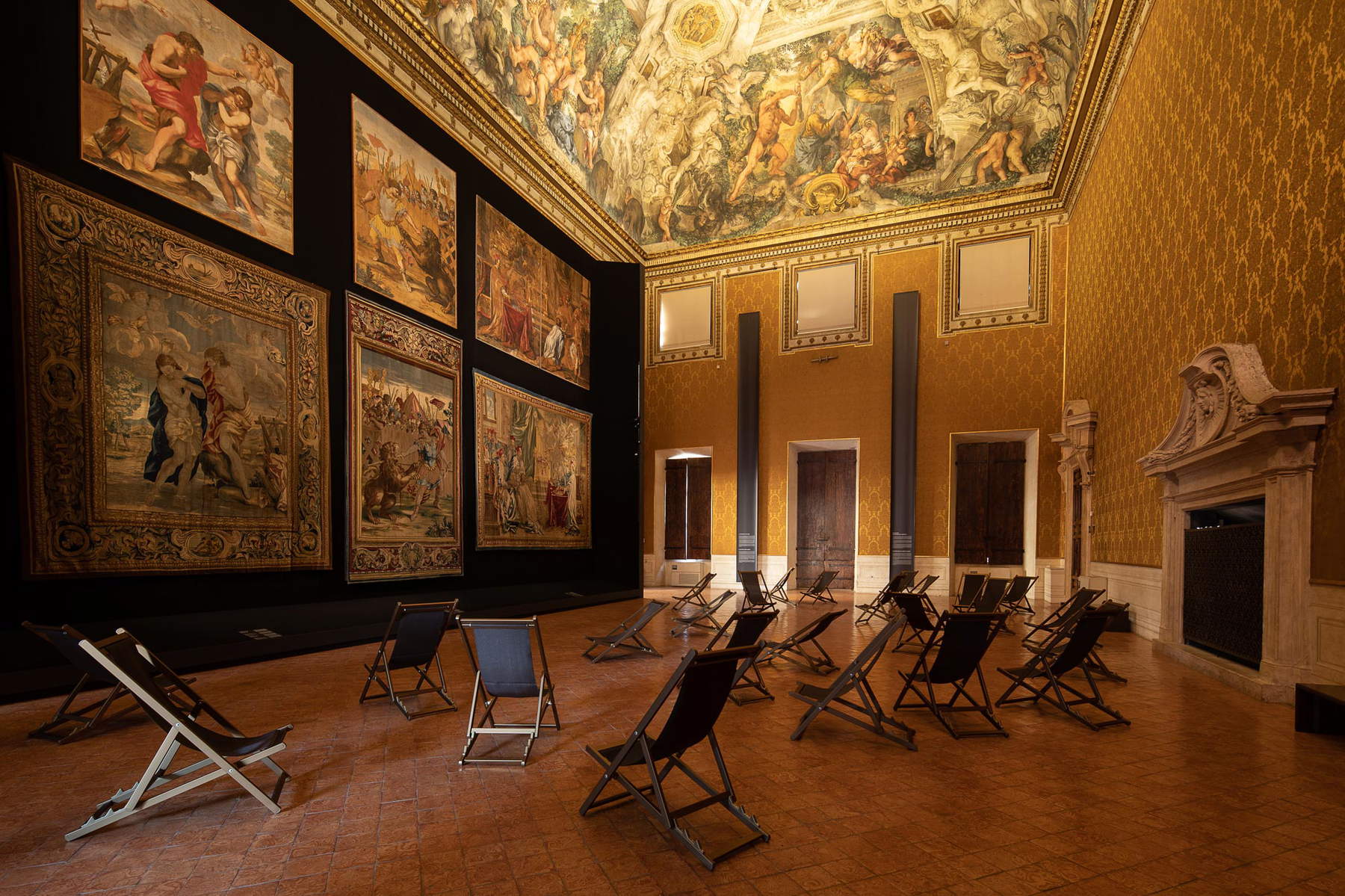
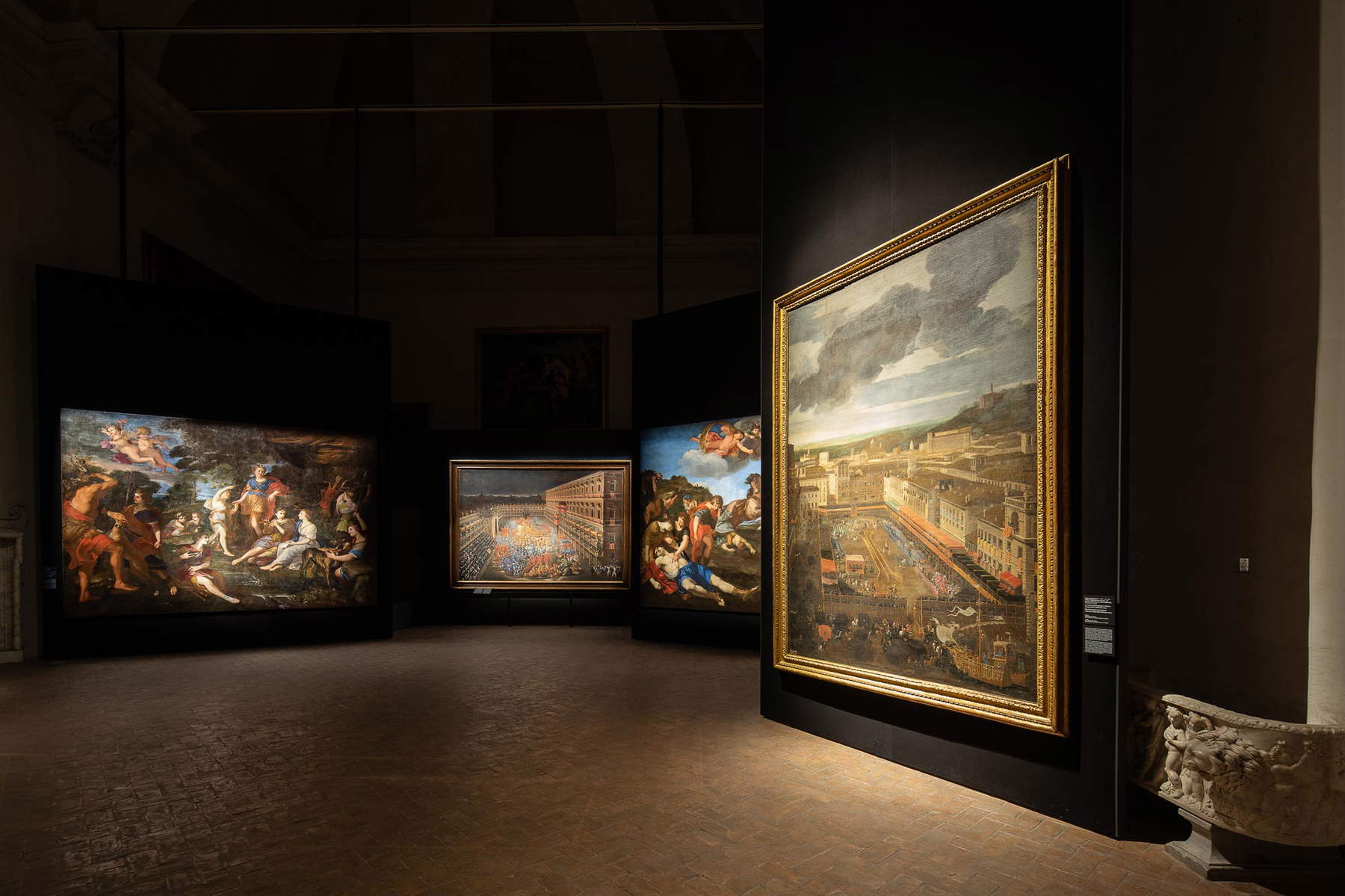
We dwelled on the historical-political premise because this aspect is neglected by the exhibition, which focuses mainly on issues related to the “sovereign image,” although Flaminia Gennari Santori’s curious presentation specifies from the outset that the exhibition “celebrates the splendor, complexities, and many shadows of the pontificate” (does an exhibition necessarily have to “celebrate” a historical period? More importantly, how is it possible to “celebrate the shadows”?!). The twelve sections of the exhibition, divided between the exhibition halls on the first floor of Palazzo Barberini (it is difficult to find exhibitions that, more than this one, are linked to the place that hosts it) and the monumental halls of the piano nobile, which in turn form an integral part of the exhibition, compose a narrative that speaks almost exclusively about the cultural policy of the Tuscan pontiff. In the first chapter we make the acquaintance of a young Maffeo Barberini, scion of a family of merchants originally from Barberino Val d’Elsa in Tuscany (originally the surname was “Tafani.” but then Maffeo’s ascendants changed the surname, paying homage to his native village, and the family coat of arms, converting the annoying horse fly into the more noble and industrious bee), already unscrupulous and perfectly aware of the role of images as a form of self-promotion and affirmation of personal prestige: the exhibition thus opens with some products of Maffeo’s very early patronage, beginning with portraits of him and his uncle Francesco. The former is indeed a rather celebrated portrait, attributed by most critics to Caravaggio, while its pendant, perfectly equivalent in size and extremely similar in quality, has yet to find a name that everyone agrees on because, Schütze explains in the catalog, the quality of the modeling of the robes and in physical presence appears inferior. The same, however, would not be said of the face of the effigy, which in quality does not differ from that of Maffeo, and it is difficult, at least in the writer’s opinion, to imagine a different artist: could this also not easily be the work of Merisi? A Caravaggio that, on the other hand, puts everyone in agreement, and that further testifies to the relationship between Maffeo and the Lombard painter (a relationship probably mediated by Cardinal Francesco Maria del Monte) is the Sacrifice of Isaac, already recorded in ancient times, like the two portraits mentioned above, in Maffeo’s collections. Next to it, the visitor finds a faithful reproduction, made in resin by the Factum Foundation, of Gian Lorenzo Bernini’s Saint Sebastian now in the Thyssen-Bornemisza in Madrid: the work is included at the beginning of the itinerary to demonstrate the precocity of the relationship between the future pope and the sculptor, founded not only on the solidity of the “working” bond, we might say, but also on what Michele Di Monte in the catalog does not hesitate to call “elective affinities,” since the Saint Sebastian manages to combine classical, neo-Attic reminiscences with the demands of “sacred apology.” Another significant example of Maffeo Barberini’s updated taste is Ludovico Carracci’s St. Sebastian thrown into the Cloaca Maxima, not only because he chose one of the most modern painters on the square, but also because he had him paint a decidedly rare episode.
It is a long theory of portraits that is the second section of the exhibition, “Imagining the Dynasty”: the room panels make no mention of Urban VIII’s nepotistic practices, but his boundless familism is reflected in the images the public finds on the walls. They parade the bust of Cardinal Francesco Barberini (a work by Lorenzo Ottoni that restores the posthumous effigy of the son of Urban’s brother, created cardinal as early as 1623 by his uncle), the portrait of Antonio Barberini (also created cardinal by his uncle: the work is by Simone Cantarini), and Andrea Sacchi’s large portrait depicting the bumptious Taddeo Barberini, another nephew of Maffeo, whom he appointed Gonfaloniere of the Holy Roman Church (i.e., commander of the papal army), and then again one of the pinnacles of the exhibition, the bronze equestrian statue of Carlo Barberini, Urban’s brother: the small equestrian monument, characterized by extraordinary and almost unparalleled movement, was described by Jennifer Montagu as “the most exciting bronze in the entire Baroque.” Rarely exhibited, it is placed before another of the highest moments high points of the exhibition, the comparison between the portrait of Urban VIII executed by Bernini in bronze between 1656 and 1658, and that, dating from some 20 years earlier, by Giovanni Gonnelli, known as “the blind man of Gambassi,” an astonishing and little-known blind sculptor who was able to execute likenesses in terracotta simply by touching his model (in this case, since we cannot imagine that the artist could touch the pope, we mustpicture him at work on another sculpture, perhaps on one of the very portraits of Urban VIII executed by Bernini).
Barberini’s propaganda based on the use of images also touched on the cult of saints, as the third section of the exhibition shows: Urban VIII promoted a number of reforms to bring under strict papal control every decision concerning the proclamation of saints and the spread of new cults, since at the time it was not uncommon for phenomena, even extensive ones, of devotion to figures not yet canonized or beatified to spread. What might appear to be an exquisitely doctrinal issue actually had relevant political implications, since Urban VIII’s reforms were intended on the one hand to reaffirm the primacy of the pontiff in establishing the forms of the spread of the cult of saints, and on the other hand to serve as a diplomatic tool, since the reform stipulated that secular institutions, including foreign ones, had to obligatorily forward a formal request to the Holy See if they wished to initiate canonization processes for their saints. Among the saints canonized by Maffeo Barberini were the martyrs of Nagasaki, whose crucifixion is narrated in a well-known painting by Tanzio da Varallo lent by the Pinacoteca di Brera, and Maria Maddalena de’ Pazzi, who is seen instead in the Three Magdalenes by Andrea Sacchi, one of the greatest painters of Barberini’s Rome. The bronze model of the monument to Matilda of Canossa commissioned from Bernini for St. Peter’s Basilica reminds us how Urban VIII’s propaganda did not disdain even rocambolic actions, such as the translation of Matilda’s remains from the Polirone monastery of San Benedetto Po to Castel Sant’Angelo, to emphasize the importance of her figure: the countess was in fact a fierce supporter of the papacy during the struggle for investitures and was seen as a shining example of militant faith.Hers, moreover, is the only monument dedicated to a secular figure to be found in St. Peter’s. And linked to St. Peter’s is also the very dynamic model of Francesco Mochi’s Saint Veronica, which would almost be said to be moved by a futurist sensibility if one were to advance an anachronistic hyperbole.
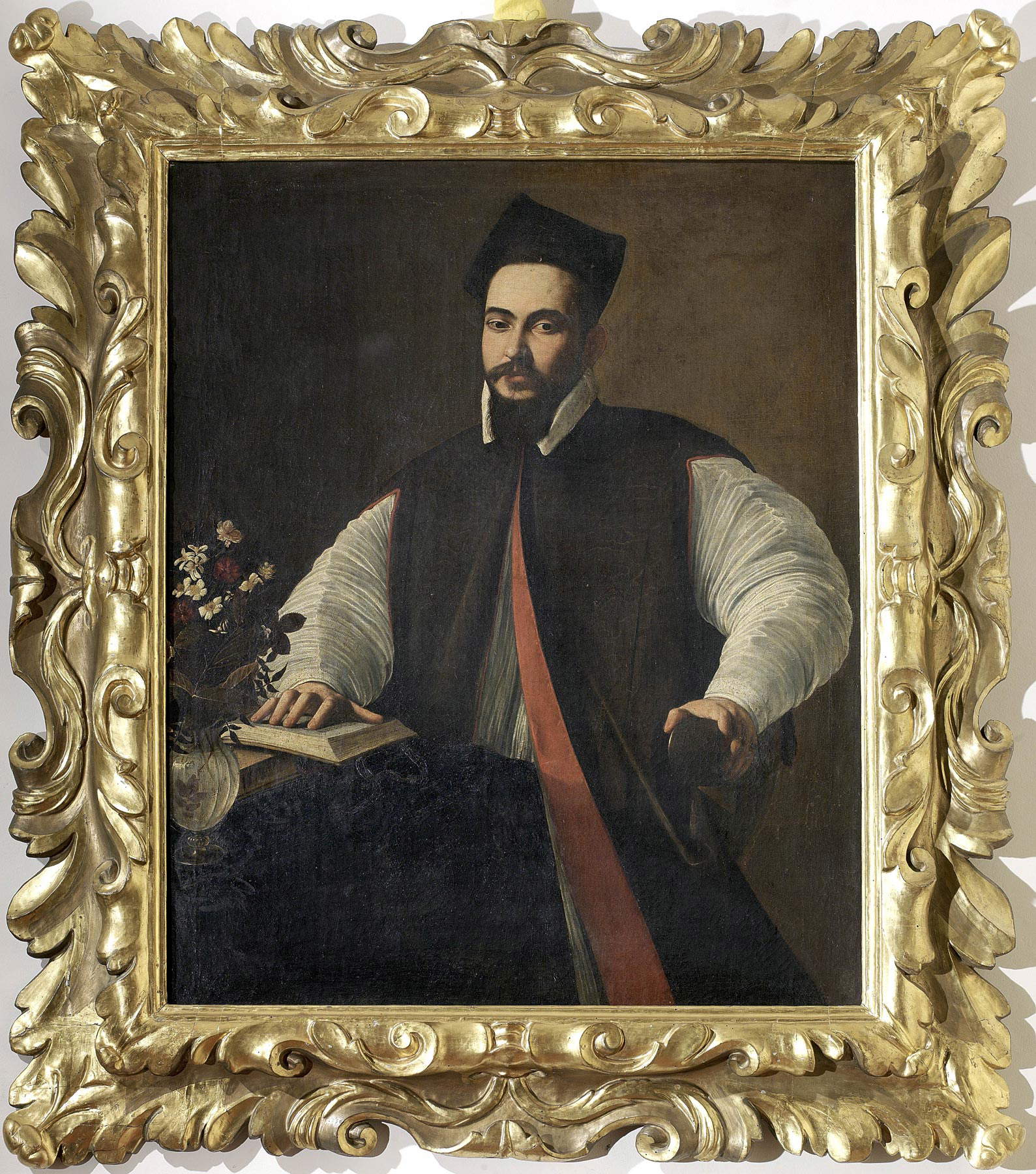
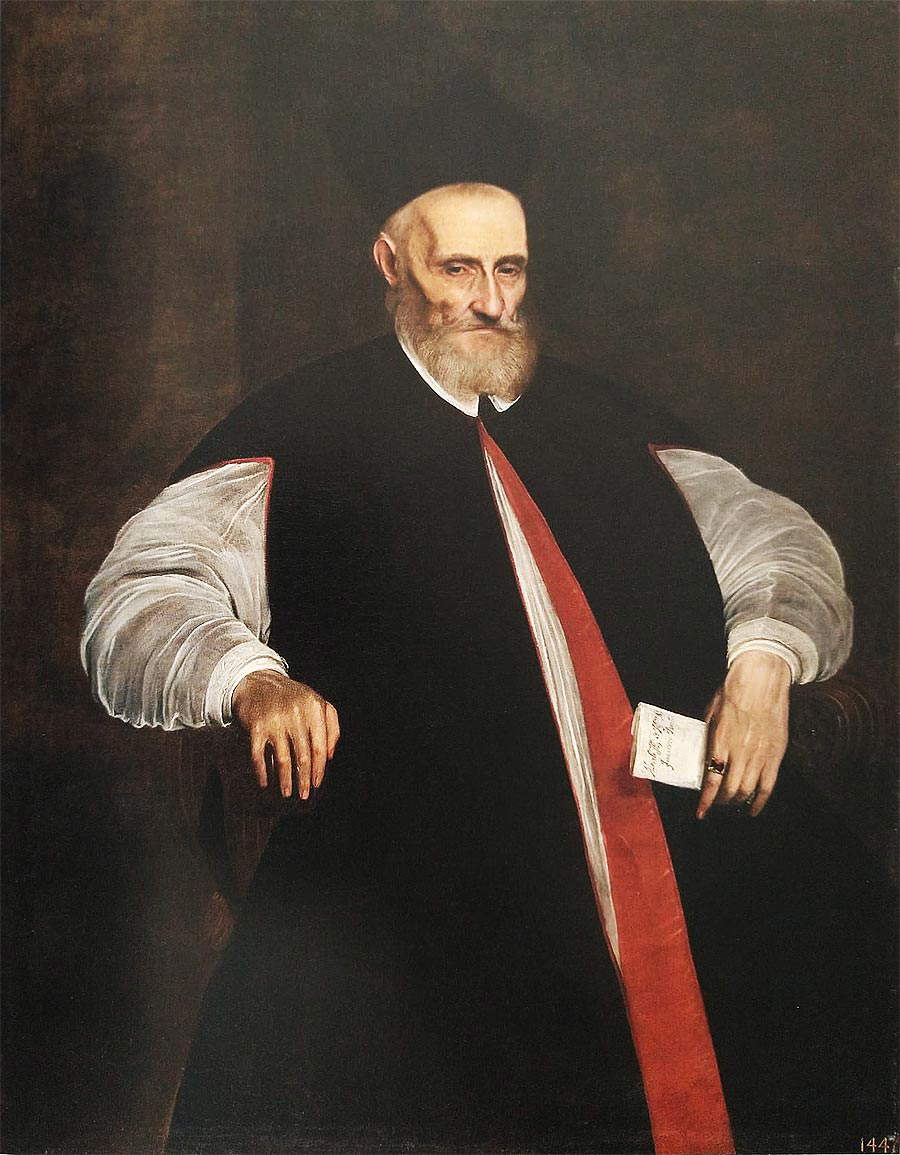
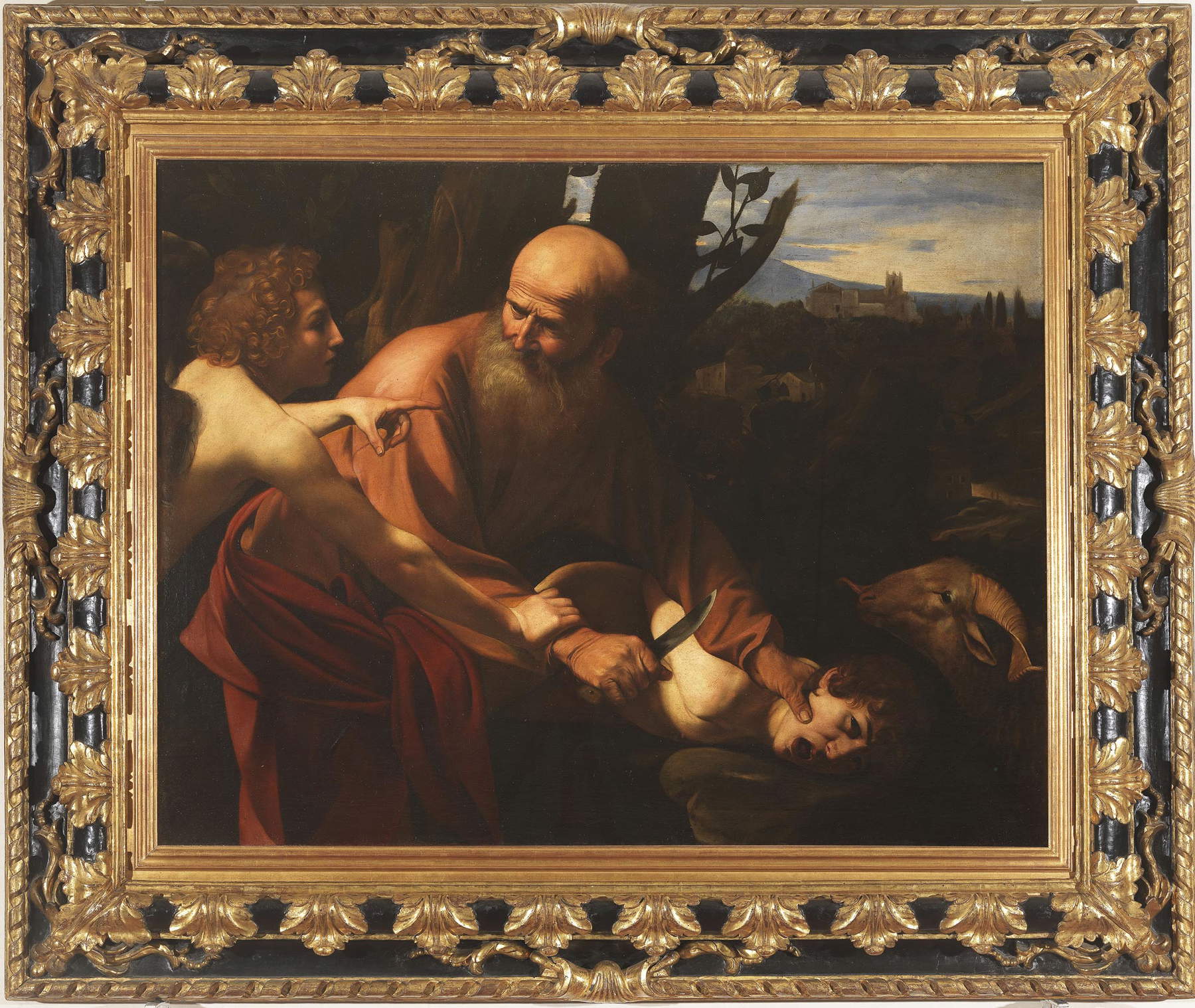
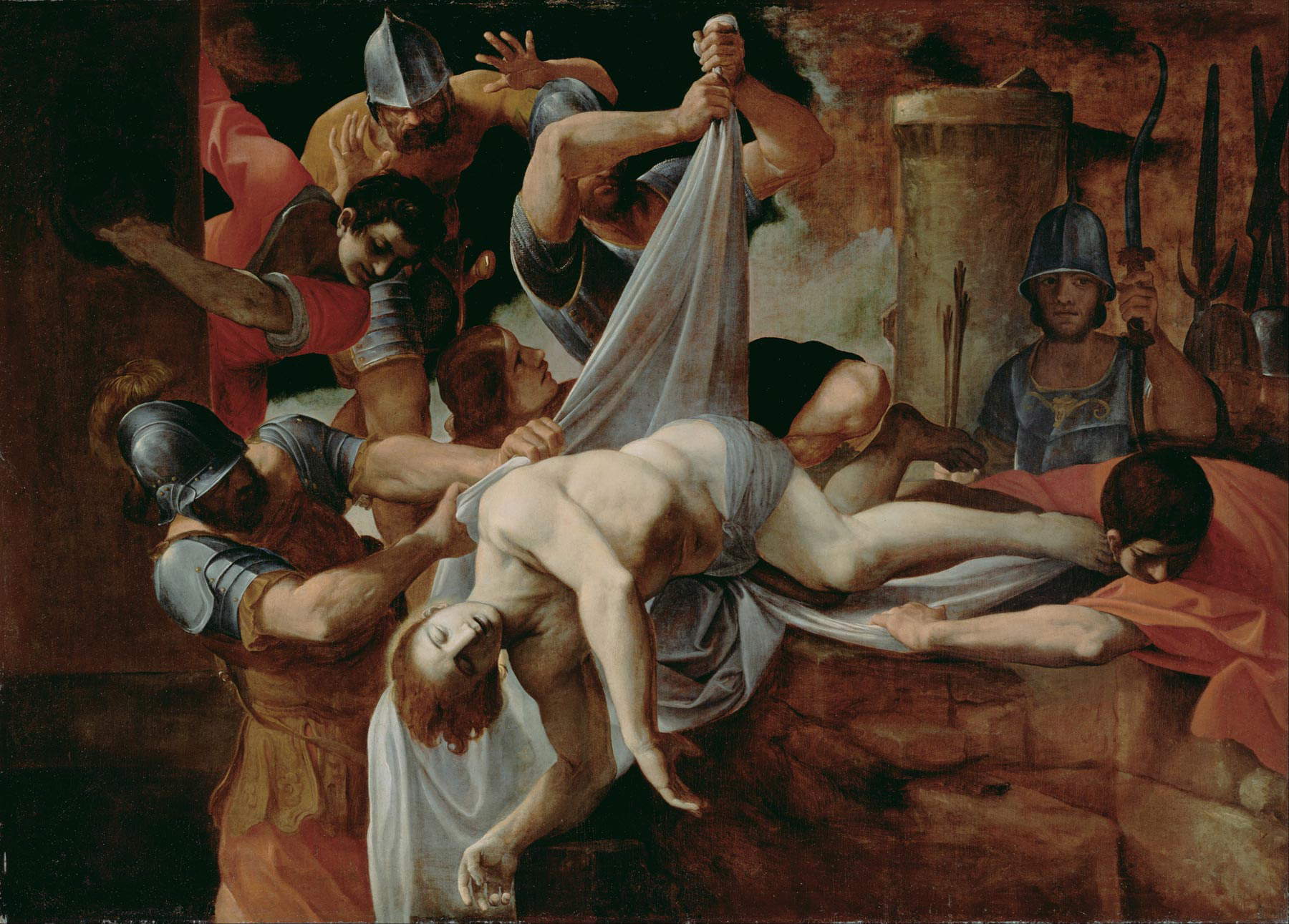
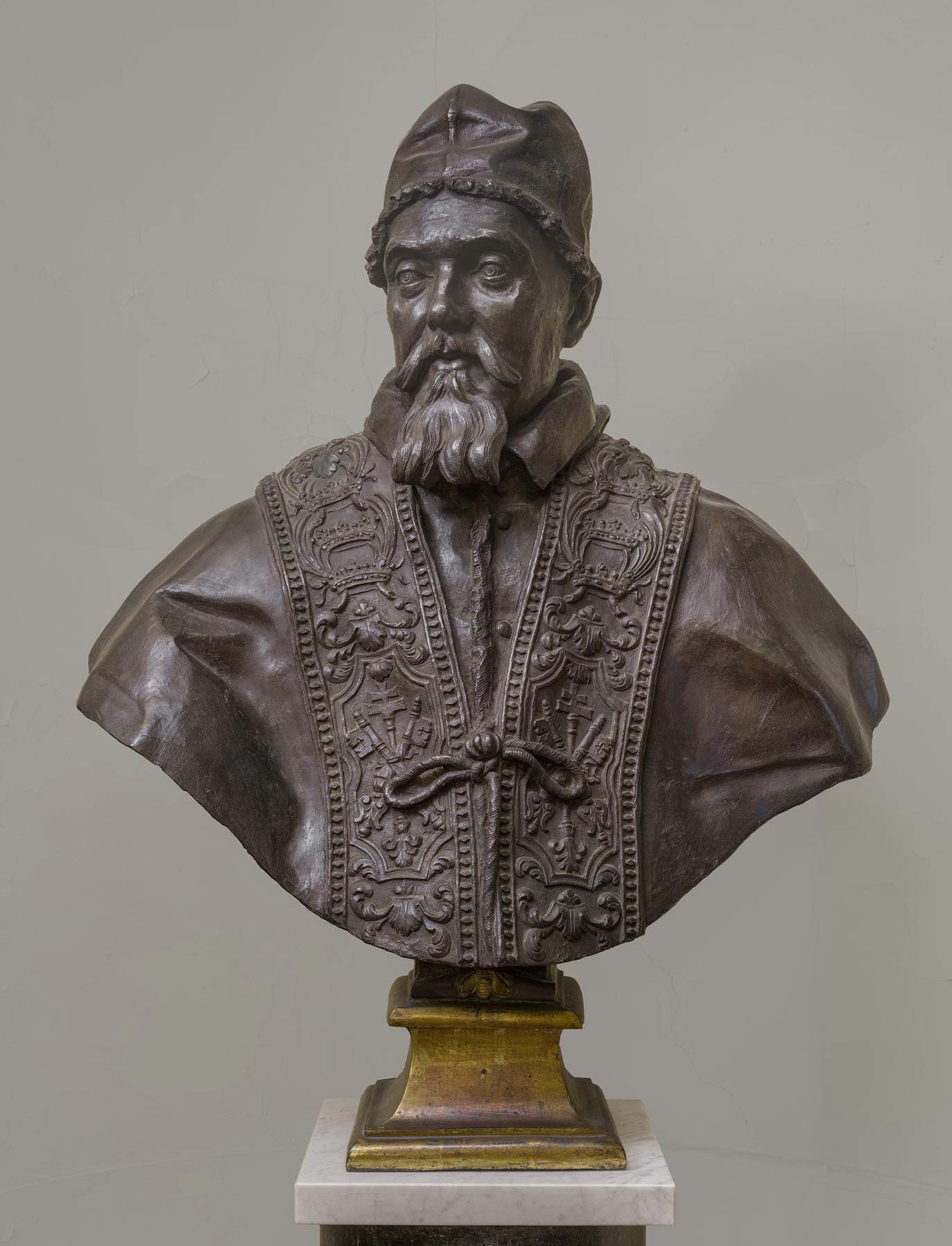
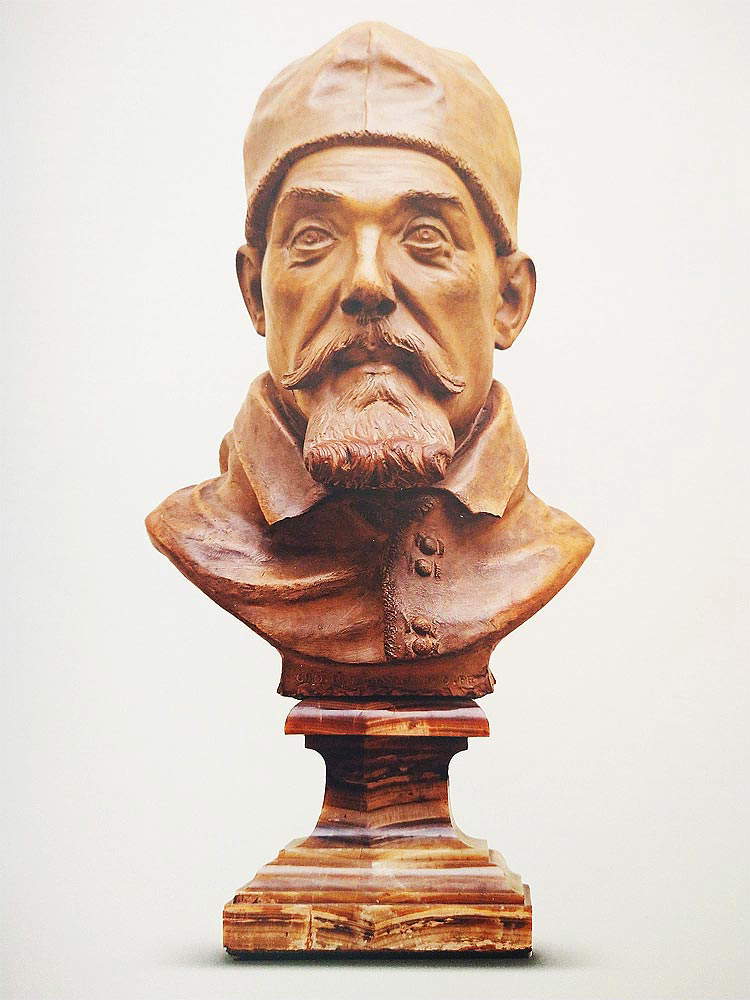
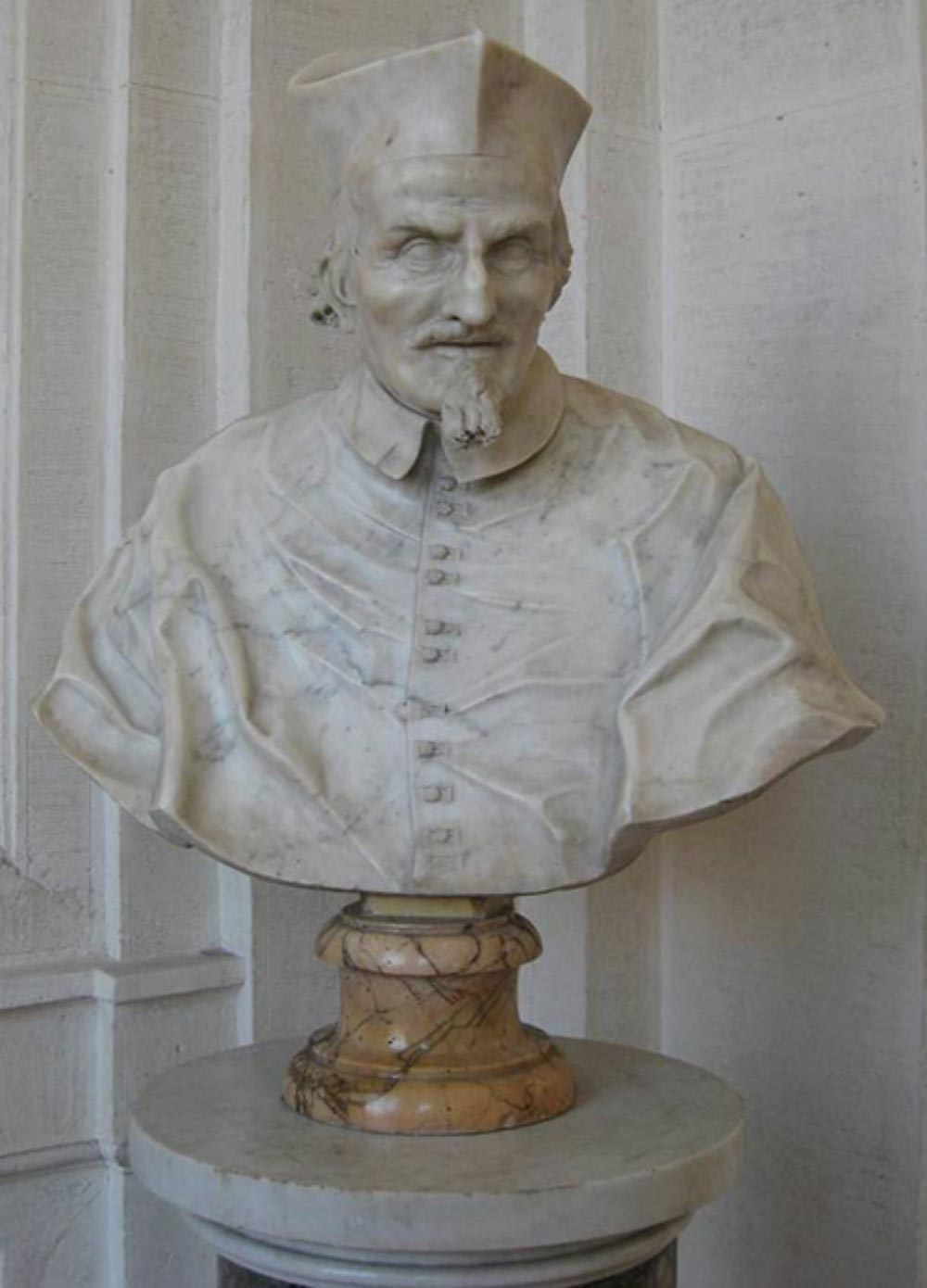
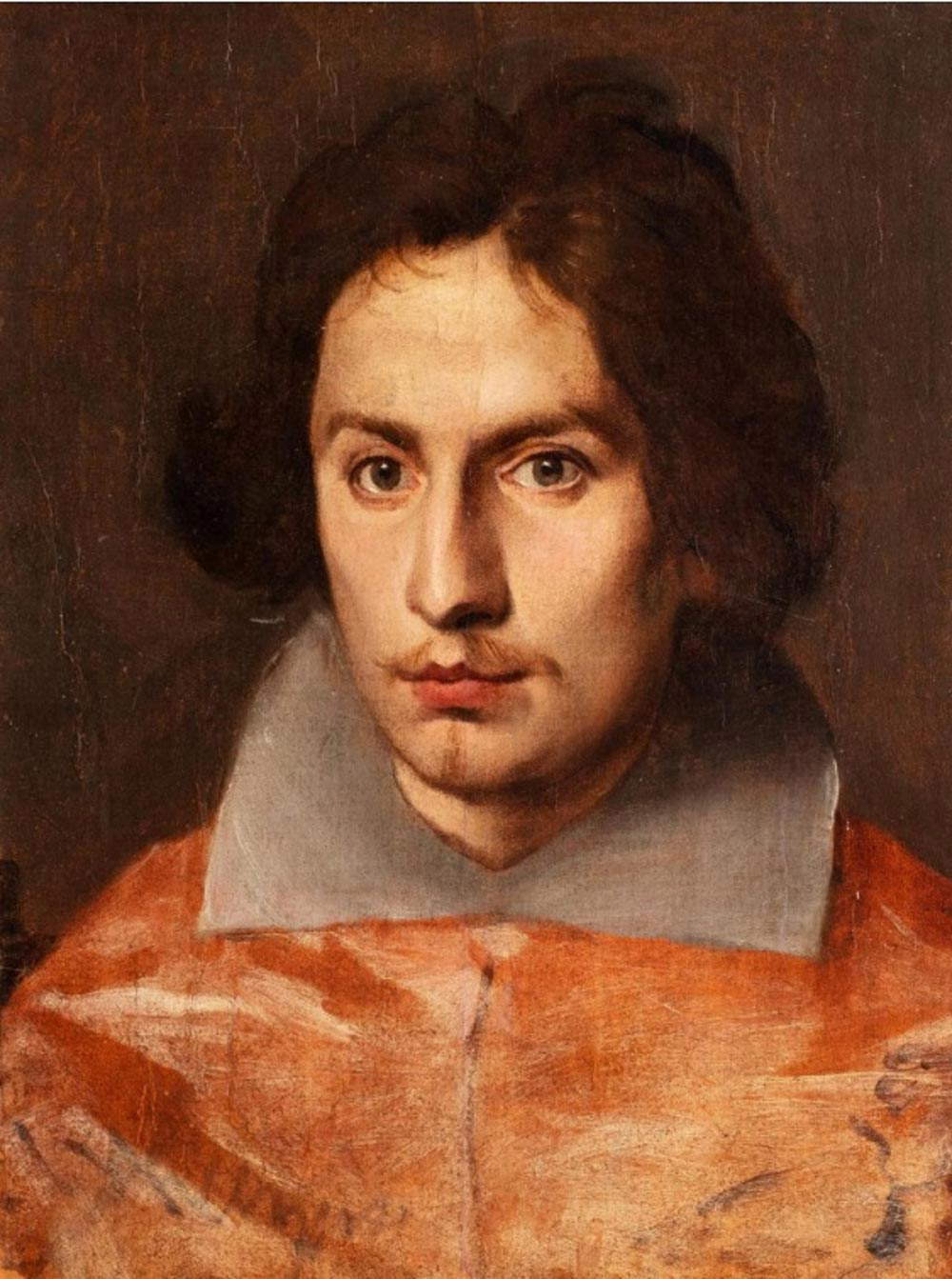
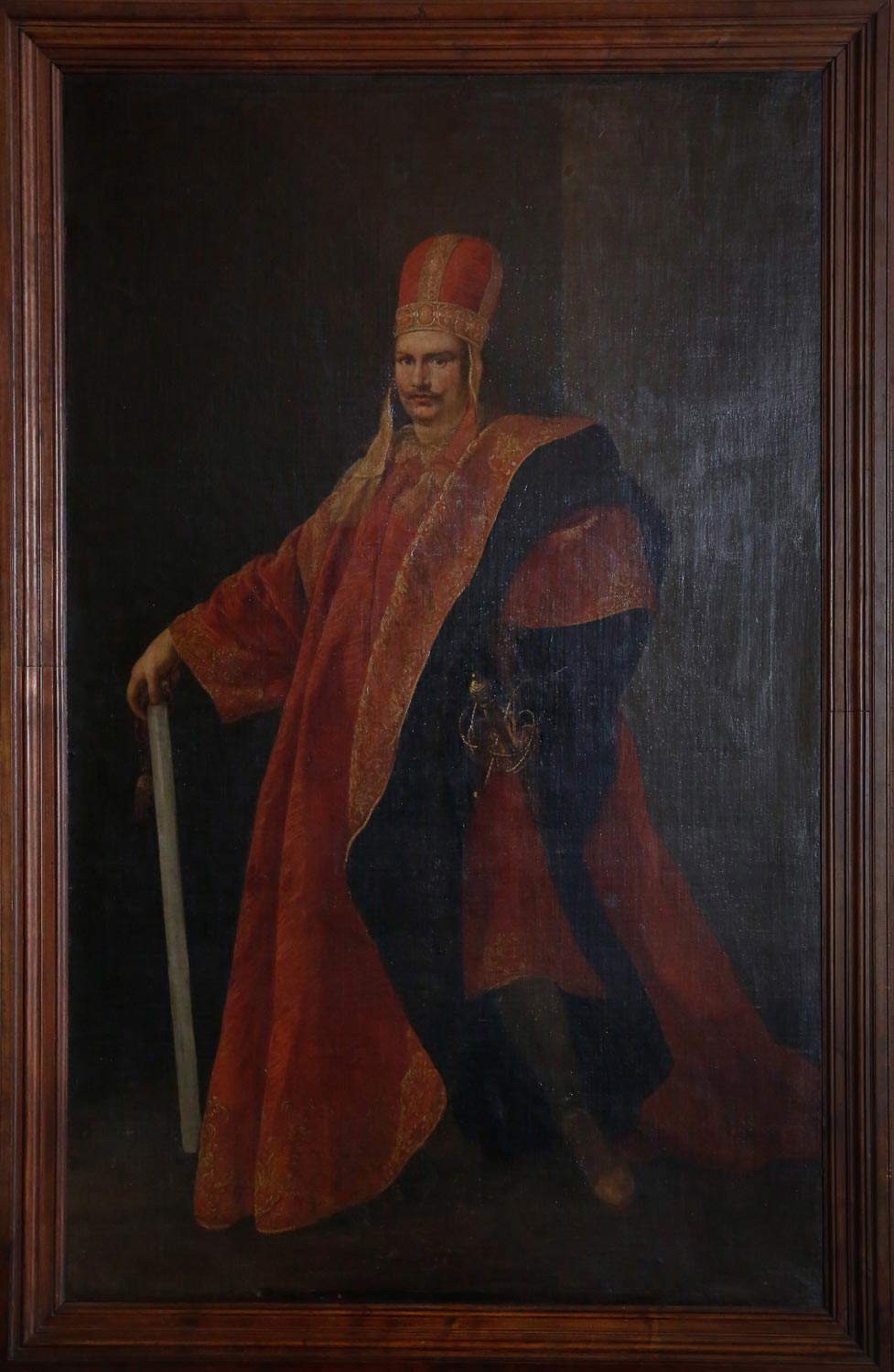
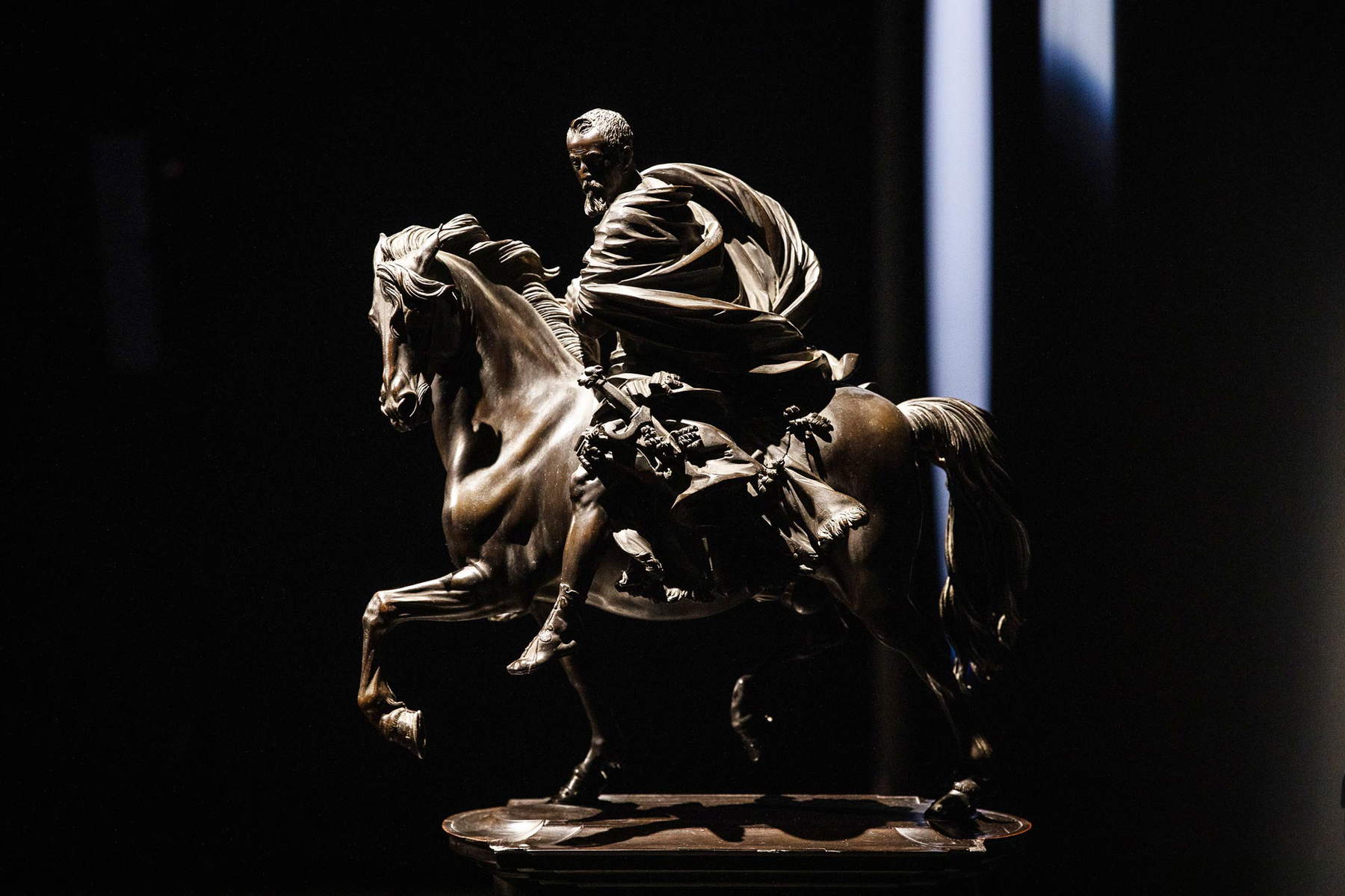
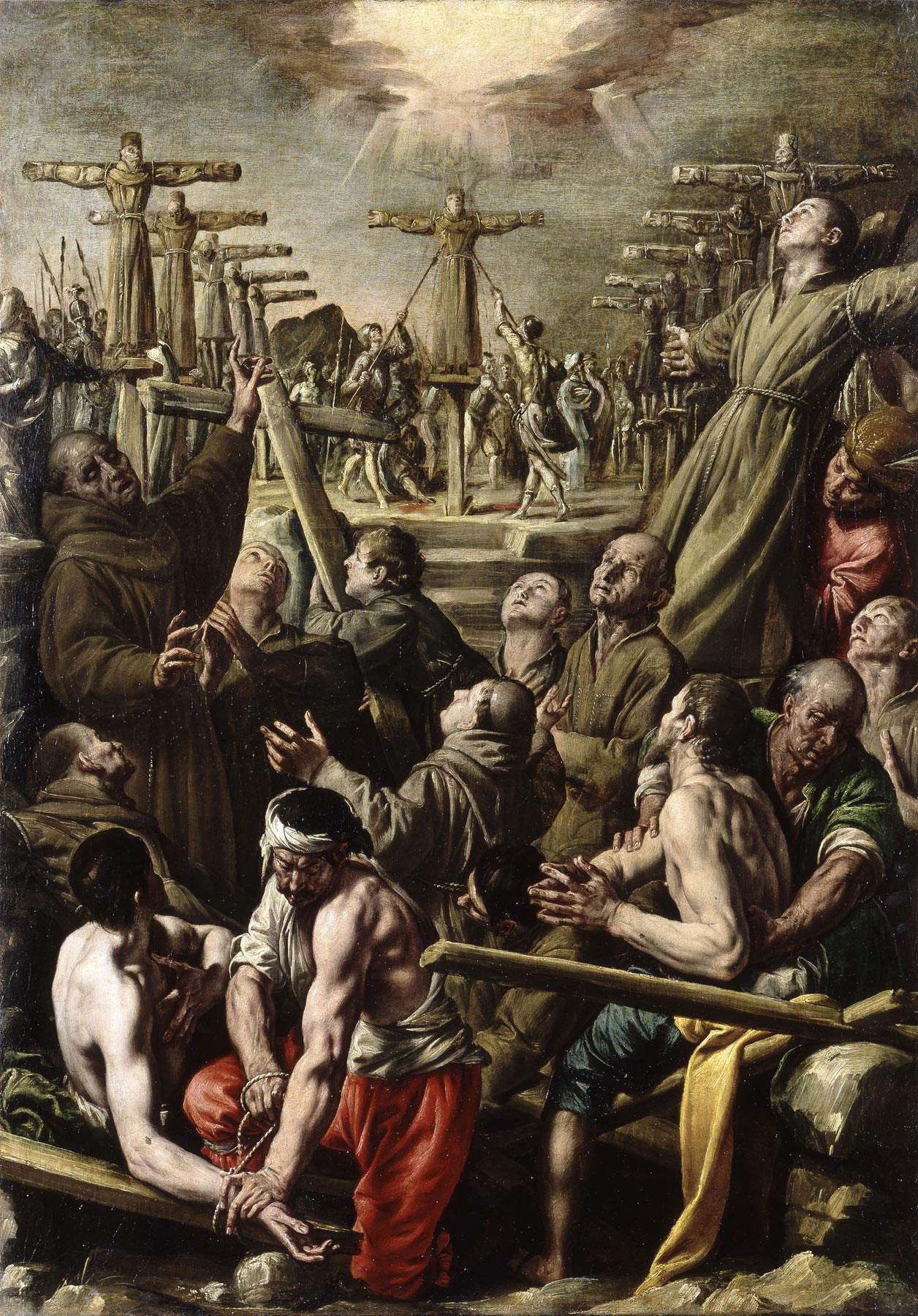
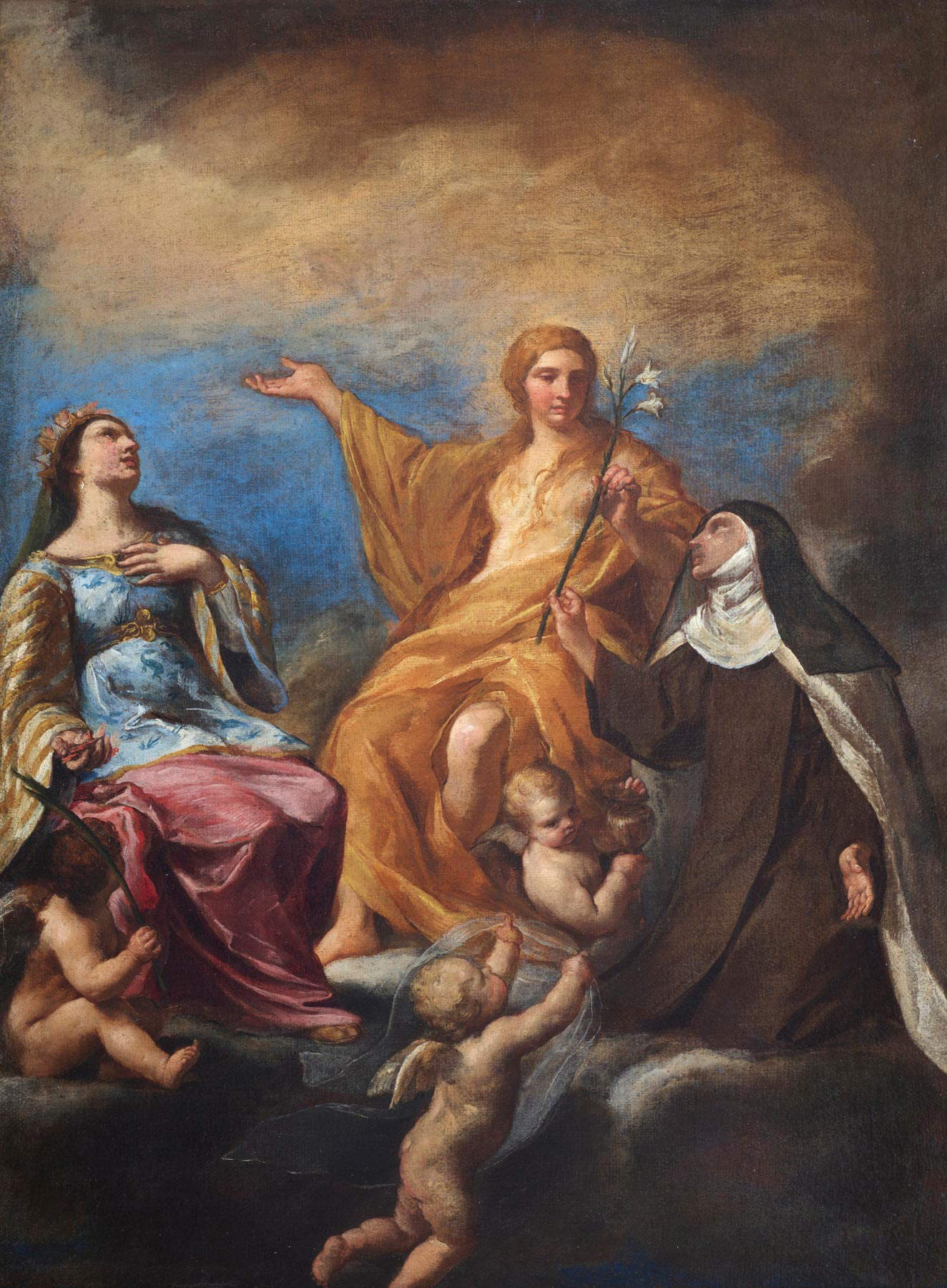
“Hic domus”: this is the Barberini motto, taken from theAeneid, that gives the title to the fourth section, dedicated to family collecting: quantity and quality of works were at the time an effective and immediate way to measure family reputation. And of course the paintings on display here reflect the Barberini’s choices and tastes, beginning with one of the most important paintings on display, Nicolas Poussin’s Death of Germanicus, commissioned by Francesco Barberini for the palace at the Quattro Fontane and on loan from the Minneapolis Museum of Art, which thus returns the painting to the place for which it was born (one canperemptorily dampen the controversy, circulated mostly via social media, about the exchange with the American museum, to which Palazzo Barberini sent Caravaggio’s Judith and Holofernes: it is true that we are fond of the cornerstone of Caravaggio’s production, but for the vicissitudes of seventeenth-century art, Poussin’s painting played a much more decisive role, and continued to provide suggestions even over the long haul: just think of Jacques-Louis David’s Oath of the Horatii ). From Poussin’s modern classicism we move on to the Renaissance Fornarina by Raphael, purchased by Antonio Barberini, whose favorite Marcantonio Pasqualini is depicted by Andrea Sacchi in a singular mythological portrait together with the god Apollo. Also linked to Antonio Barberini is Giovanni Lanfranco’s Venus playing the harp: the goddess is in fact intent on playing the Barberini harp, the musical instrument (displayed in the center of the room) commissioned by Antonio Barberini himself for the musician and harpist Marco Marazzoli (recipient of Lanfranco’s painting, later left to Antonio). On the other hand, we owe to Francesco’s commission the masterpiece by Valentin de Boulogne, theAllegory of Italy destined for the Palazzo Barberini, where Italy is depicted as a sort of Minerva towering above the personifications of the Arno and the Tiber, in turn rivers of the lands to which Urban VIII was linked. Notable, finally, is the presence of the 16th-century Barberini Pan, which the exhibition organizers brought back to the palace where it was in ancient times, obtaining it on loan from the Saint Louis Museum of Art.
The Barberini’s bees are the protagonists of the fifth section: aware of the implications of a shrewd branding policy, Urban VIII, strong in the fact that he could focus on an animal with which typically positive characteristics were associated (industriousness, sweetness of honey, a spirit of solidarity, social tightness, intelligence, and so on), scattered his bees throughout the city, as no other pope had done before and would do later with his own coat of arms. Even today Rome is filled with the bees, so that we are reminded, as Louise Rice points out in the catalog, “whenever we see them that we are in Barberini territory.” In the room, a series of engravings whose subjects are mythological themes that have to do with bees and highlight their qualities (engravings were at the time the works that enjoyed the greatest ease of circulation: the Barberinis knew, after all, how to be very effective in organizing their propaganda) surround a large tapestry by the Flemish Giacomo della Riviera (Jacob van den Vliete) executed to a design by Francesco Mignucci, in which we see the coat of arms with bees and the laurel plant, accompanied by the motto “Hic Domus” and a view of the fief of Palestrina, acquired in 1629. The iconographic elements refer to the legend of the arrival of Aeneas in Latium: Virgil narrates that one day, at the court of King Latino, a swarm of bees landed on a laurel plant, and the soothsayers of his court interpreted the event as a premonitory sign of the arrival of a foreigner. It was Aeneas, who from Troy arrived on the coast of Latium uttering the phrase “Hic domus, haec patria est.” Maffeo Barberini compared himself to Aeneas for leaving his native Florence and moving to Rome. On the adjoining wall stands Charles Mellin’s large canvas depicting theAllegory of Peace and the Arts under the Barberino Pontificate, executed before 1627: never was a pope’s intent more unfulfilled.
With the sixth section we get acquainted with the Barberini’s antiquarian culture and their passion for antiquity (which, however, nothing could spare the entablature of the Pantheon: a large bronze nail, lent by the Antikensammlung in Berlin, testifies to the devastating reuse of the monument’s remains), while the seventh, with which the itinerary on the first floor of the Palazzo Barberini ends, introduces the subject of science under the pontificate of Urban VIII: the pope could not help but be disinterested in the spectacular progress that the sciences were making in those years. The room therefore displays texts that testify to the advancement of knowledge in all fields: from botany (with the De Florum cultura by the Sienese Giovanni Battista Ferrari) to entomology (Francesco Stelluti’s Melissographia, a treatise on bees with which the Lincei paid tribute to Urban VIII at the time of his election, and with which the research of the Accademia dei Lincei and the use of the microscope, a recently born instrument, were promoted), passing, of course, through astronomy, with the works of Galileo Galilei. It is interesting to note, as Filippo Camerota notes in his catalog essay, that “the Urbani emblems also explicitly became emblematic icons of scientific research: the Sun as the object of study of the new telescopic astronomy inaugurated by Galileo [...] and the Bees as an emblem of the new course of naturalistic studies promoted by the Lincei and favored by the Galilean invention of the microscope.”
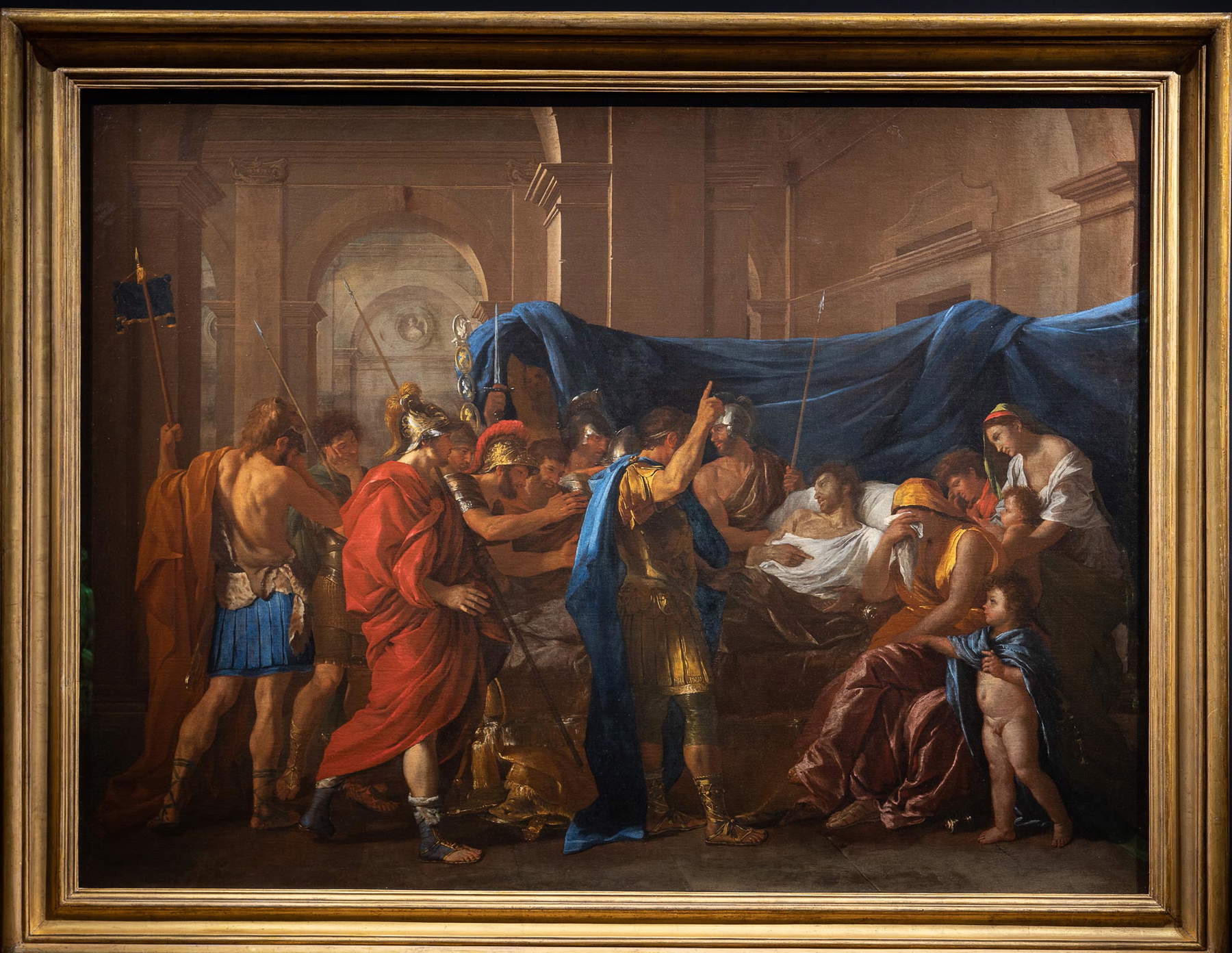
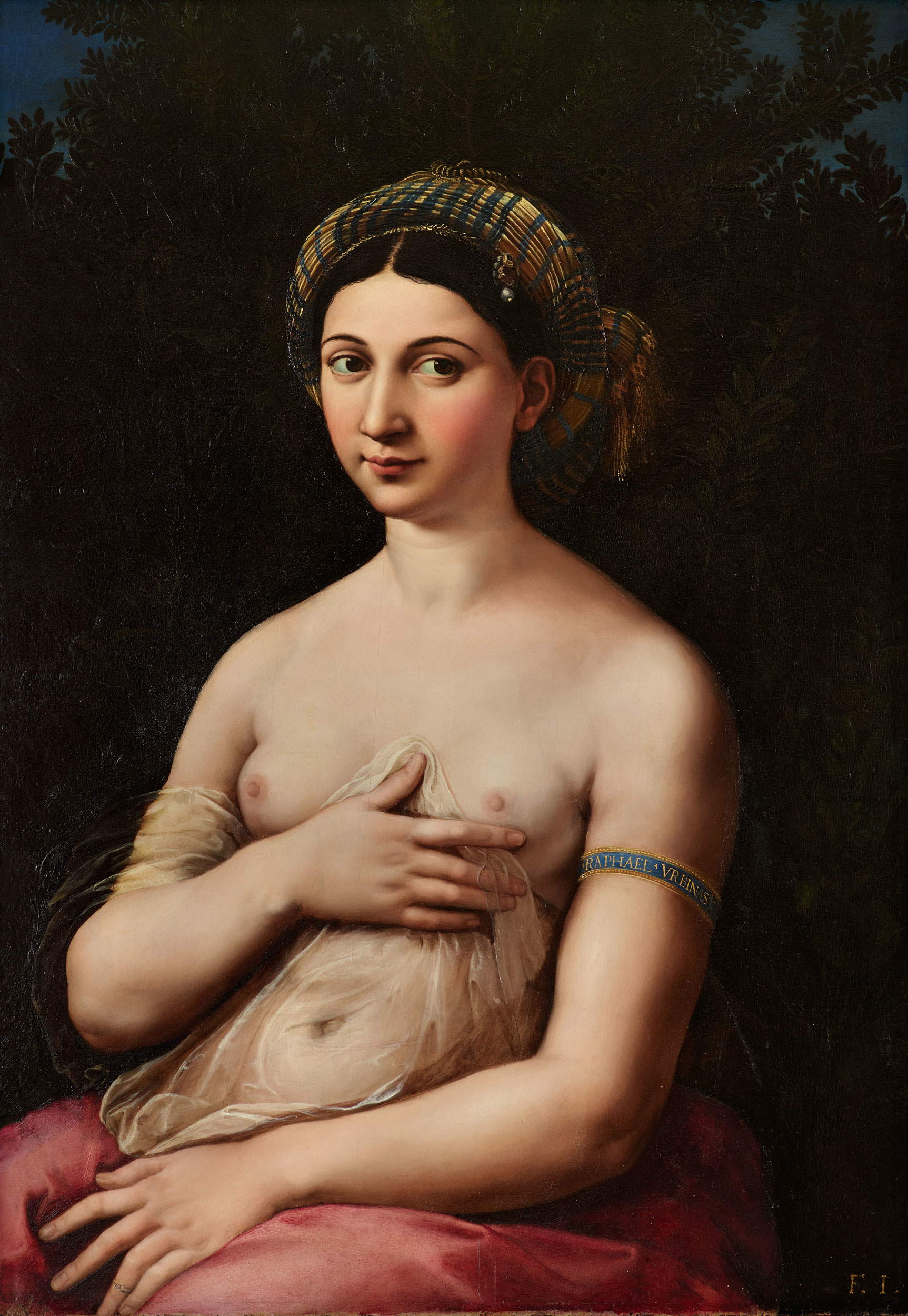
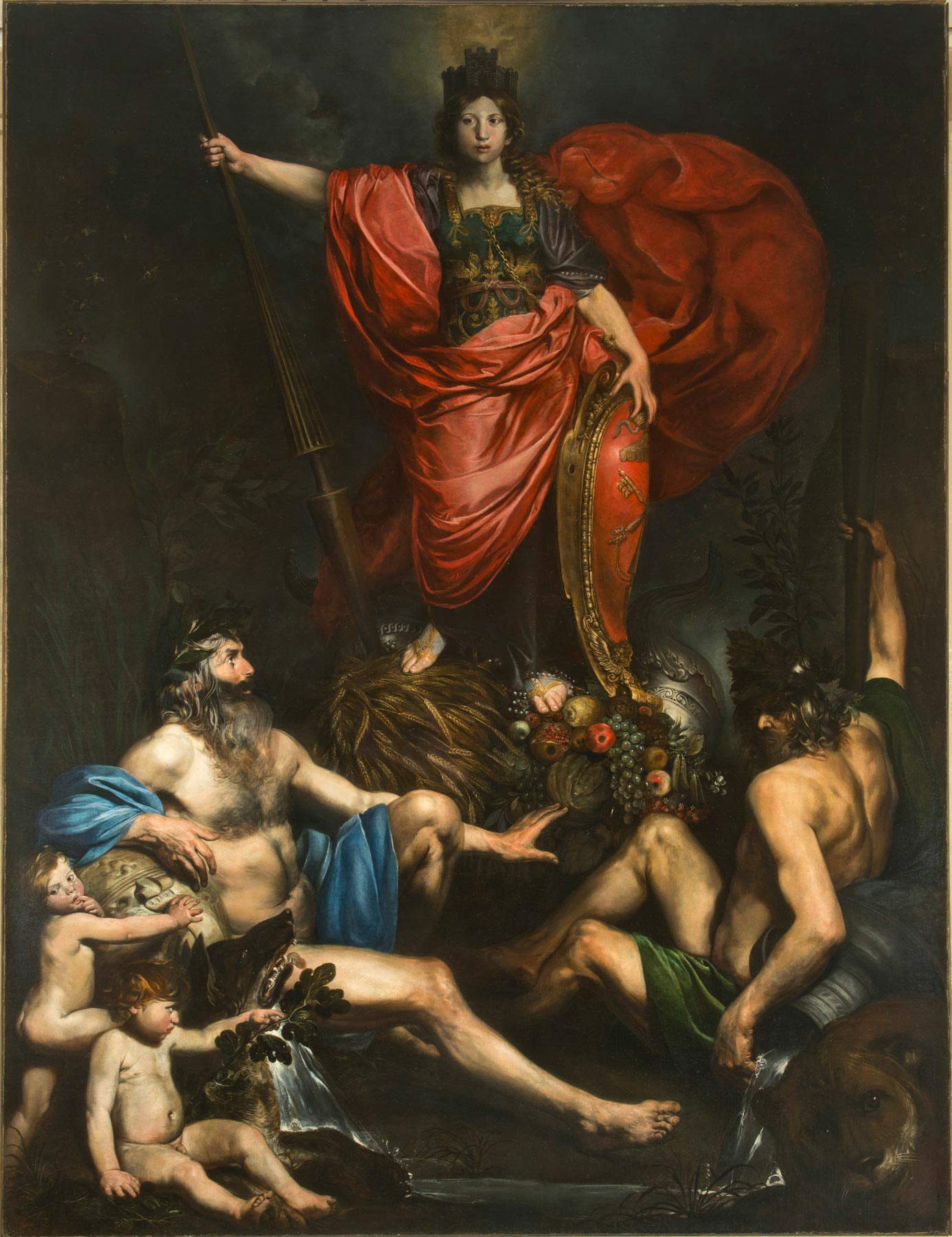
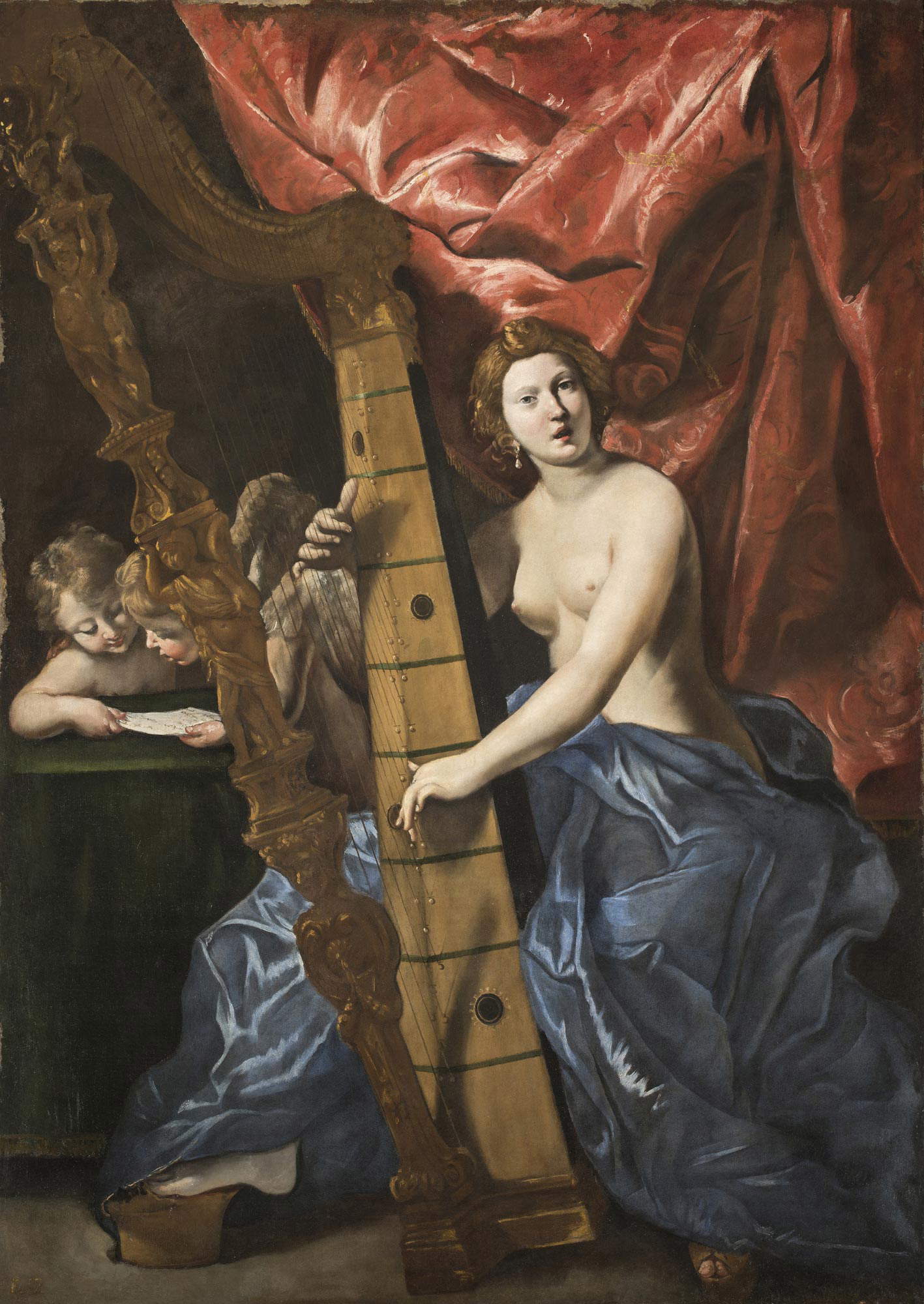
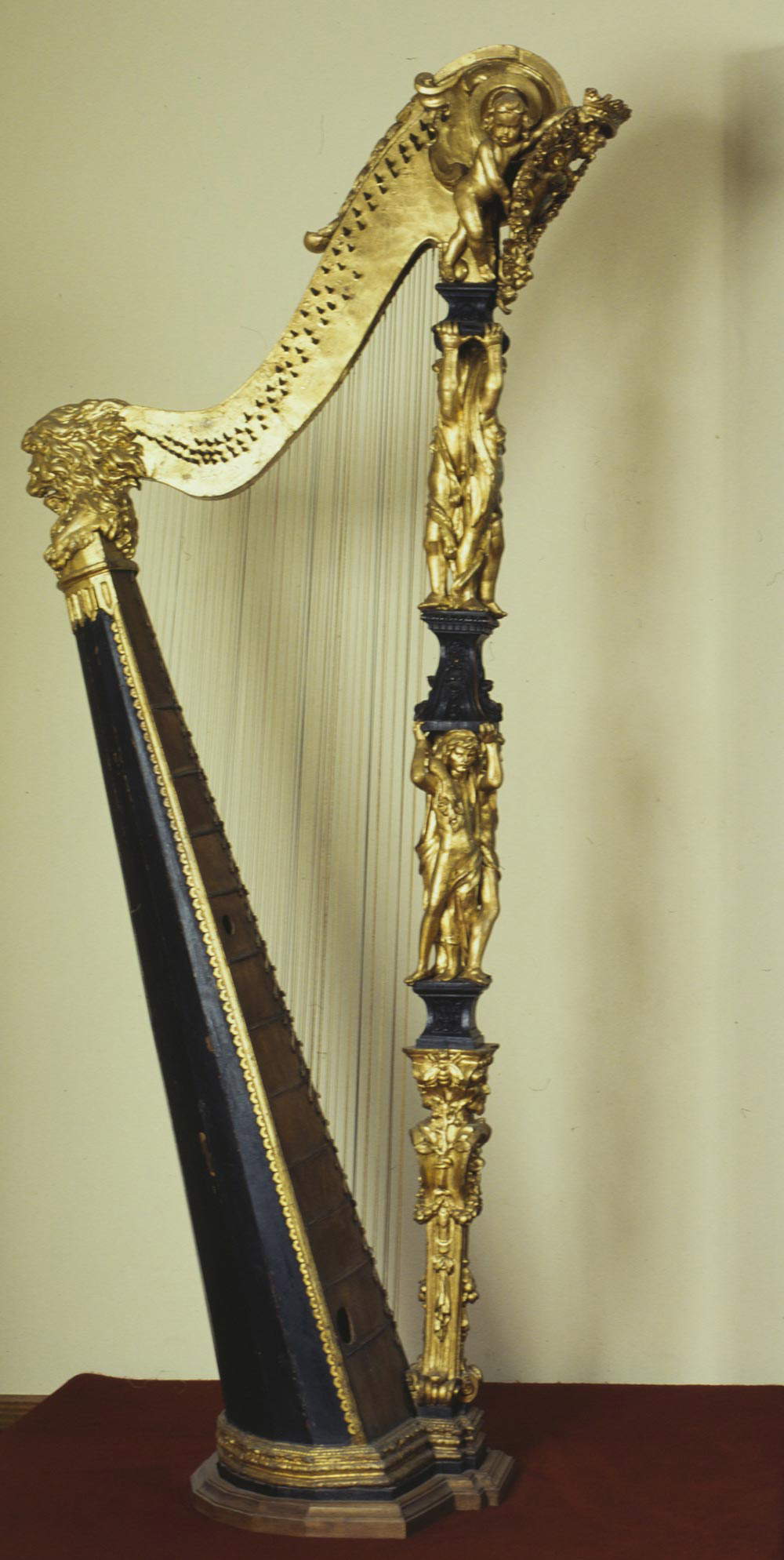
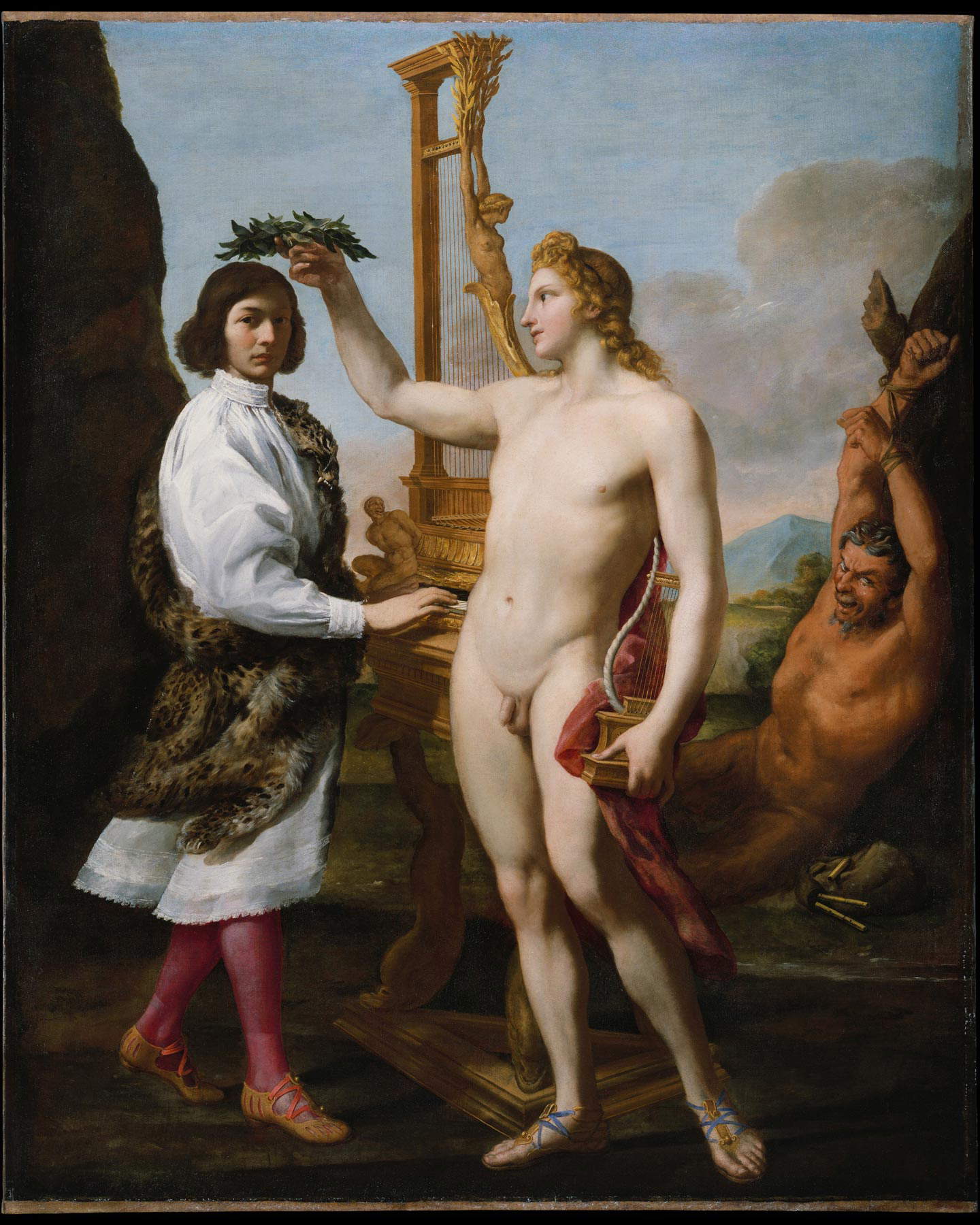
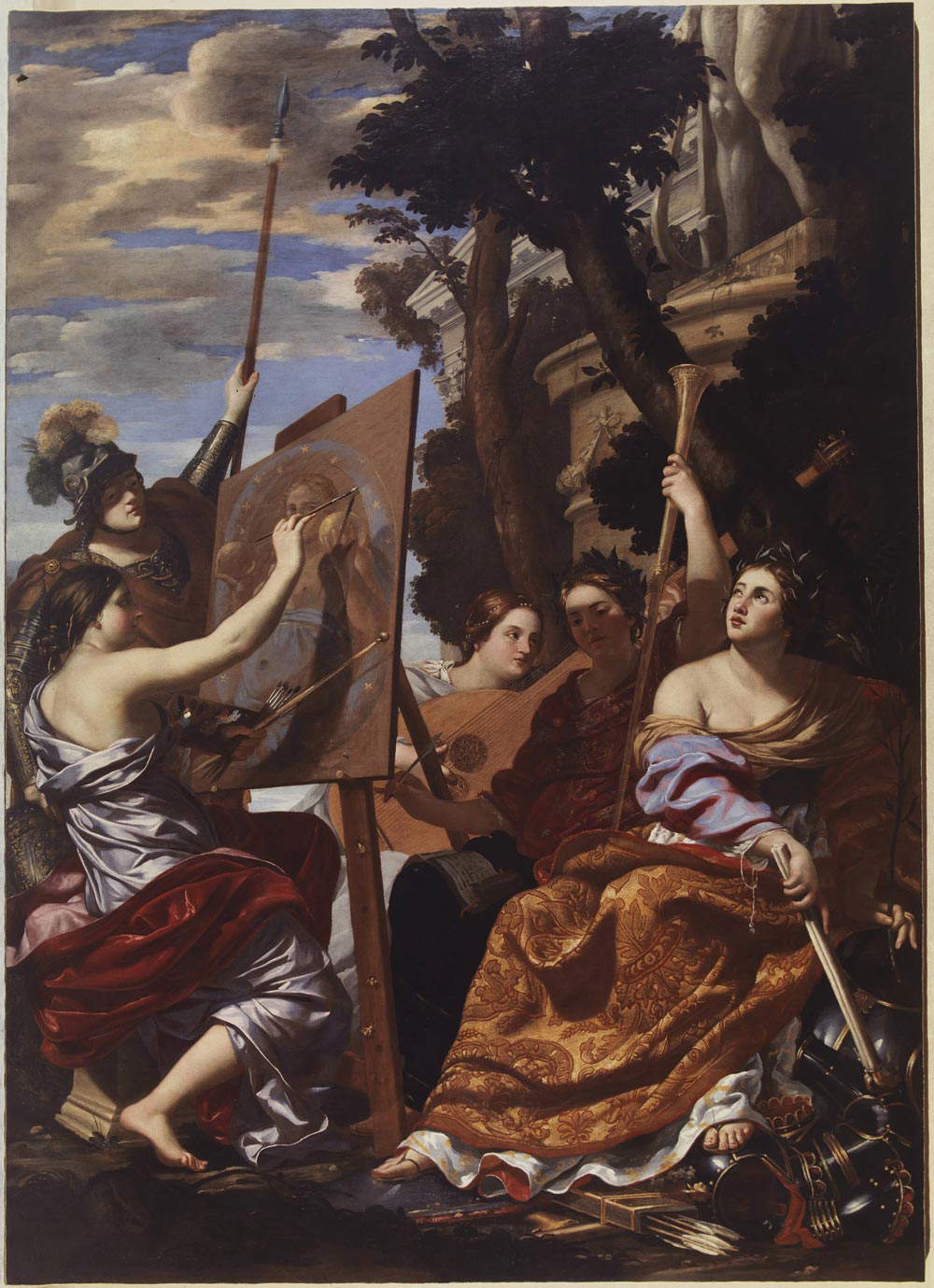
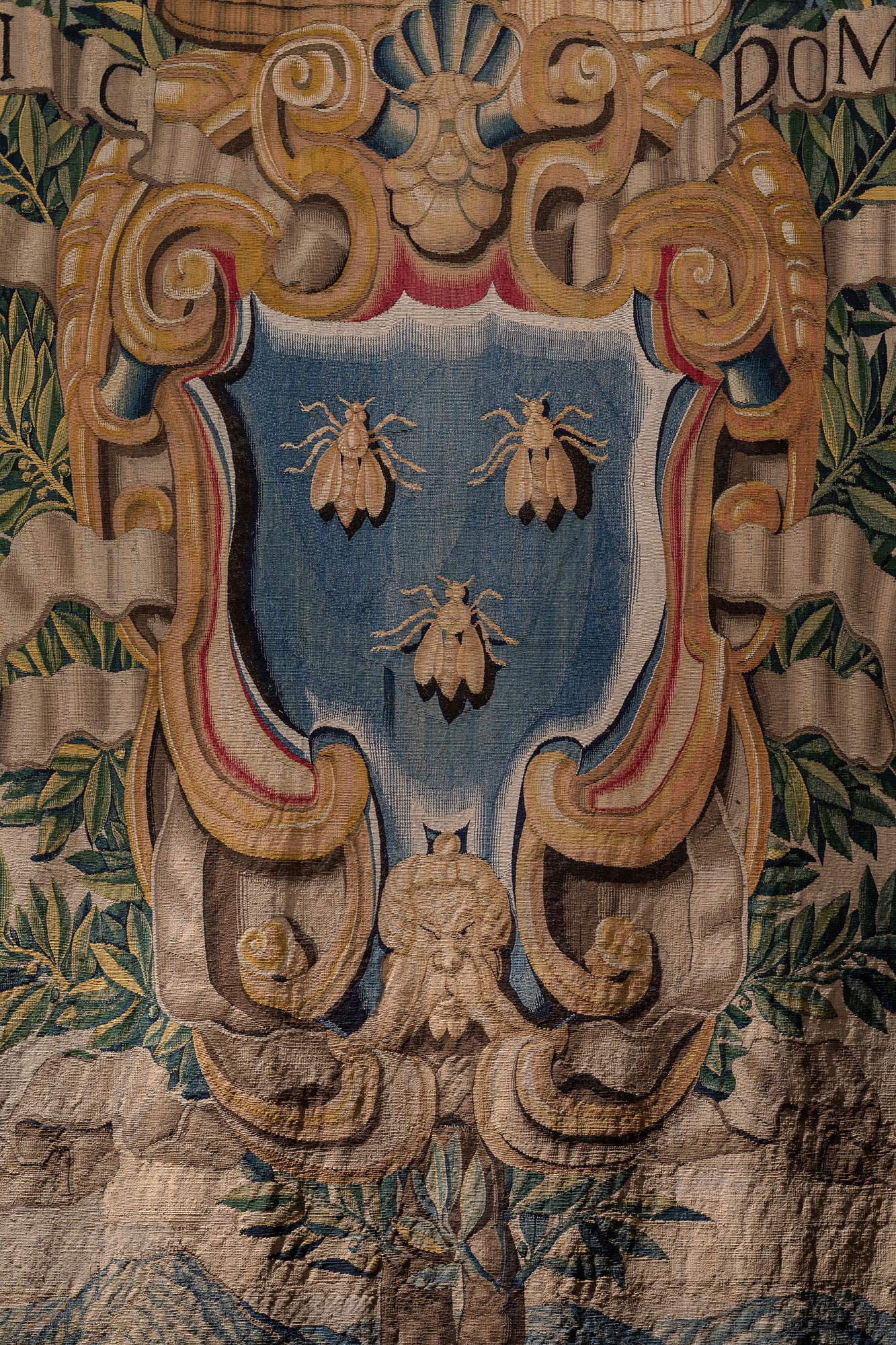
Barberini’s feats of the sun and the bees form the trait d ’union between the two parts of the exhibition: one goes up and heads to the Salone di Pietro da Cortona, the centerpiece of the palace, in which a section of the exhibition dedicated to the luxurious tapestries made for the Barberini between 1627 and 1679 has been set up, and where many beach chairs have been arranged for the occasion, on which one stops (also for a very long time!) to view in a comfortable position the Triumph of Divine Providence executed between 1632 and 1639 by Pietro da Cortona, and thus to gaze at the Barberini sun just as if one were at the seaside: a laudable and intelligent initiative, both for the not even too veiled irony that characterizes it, and for the appreciable nonconformity that moreover is functional in giving the public comfortable seats. Hopefully, they will remain. In the adjoining Oval Room, one of the most intense dialogues in the exhibition is between the marble portrait of Urban VIII, a masterpiece by Gian Lorenzo Bernini, and the one, also in marble, with which a virtuoso such as Giuliano Finelli of Carrara captured the image of the Pistoiese scholar Francesco Bracciolini, a close friend of the pope since his youth: a work, on loan from the Victoria and Albert Museum in London, that is surprising for the very fine naturalistic rendering of the fur, the intensity of the expression, and the severity of the effigy’s presence.
The two portraits introduce a rather interlocutory chapter on poetry and rhetoric placed in the service of the pope (among the volumes on display is no shortage of an edition of Latin and Greek poems written by the pontiff himself): we then move on to a room with a more distinctly political character, in which the subject of art as a means that accompanied international diplomatic relations is addressed on the one hand, and on the other the theme of the patronage of the pope’sentourage, hastily resolved with a series of portraits of figures who gravitated “Around the beehive,” as per the section’s title, and with some paintings commissioned by them: Giovanni Francesco Romanelli’s Finding of Moses, a proponent of a modern Raphaelesque classicism and one of Cardinal Francesco Barberini’s favorite artists to the point of achieving international fame (the work, from the museum of the Castle of Compiègne in France, is part of the cycle on the stories of Moses executed for Anne of Austria, destined to decorate the Louvre Palace), and Simon Vouet’sAllegory of Intellect, Memory and Will, commissioned by Marcello Sacchetti, the pope’s general depositary. In the meager section on “diplomatic” art, consisting of only four works (but all of great importance), worth mentioning are Poussin’s Destruction of the Temple of Jerusalem, offered by Cardinal Antonio Barberini to Johann Anton von Eggenberg, ambassador of the Holy Roman Empire, and the bust of Cardinal Richelieu executed by Bernini, displayed next to the Triple Portrait of the Cardinal executed by Philippe de Champaigne and his workshop, problematic because only recently have critics concluded, however not unanimously, that the work had to be sent from Paris to Rome as a model so that Francesco Mochi could work on his statue of Richelieu. The exhibition adequately highlights not only how the great artists, starting with Bernini, were in the service of diplomacy, because a Bernini portrait could prompt, as the panels in the room explain, even “contracting a debt of favor with the artist’s ’masters’ and ultimately with the pope himself” (although it is not certain that similar actions later led to concrete results), but also the innovative use to which the Barberini subjected works of art for their diplomatic purposes: that is, iconographic subjects related to topical issues were chosen, with the implicit goal of attempting persuasive levers with regard to the recipient. Poussin’s painting, for example, was a gift to Emperor Ferdinand III, but it was also a warning: it served as a reminder to Ferdinand, who was threatening to expand into northern Italy, that Emperor Titus had ordered his army, in vain, not to destroy the Temple of Jerusalem, and had later regretted his own act of impiety. If toward the closing bars the exhibition loses a little bite, the finale is strikingly scenic, and it could not be otherwise for a section entitled “The Theater of Amazements,” devoted to the public representations of the Barberini’s power: five great paintings parade, namely the two large canvases by Andrea Camassei restored for the occasion (the Massacre of the Niobids and the Rest of Diana), put here to give an account of the work of one of the most theatrical interpreters of Barberini patronage, and three works dedicated to as many, sumptuous events organized by the family, namely theEntrance of Urban VIII to the Gesù Church and the Joust of the Saracen, both by Andrea Sacchi, and the Carousel for the Entrance of Christina of Sweden by Pietro Gagliardi, all works that glue the relative to the smallest details and above all make themselves obvious bearers of the powerful rhetoric of the family and demonstrate how the palace hosting the exhibition had taken on the dimensions of a sumptuous palace.
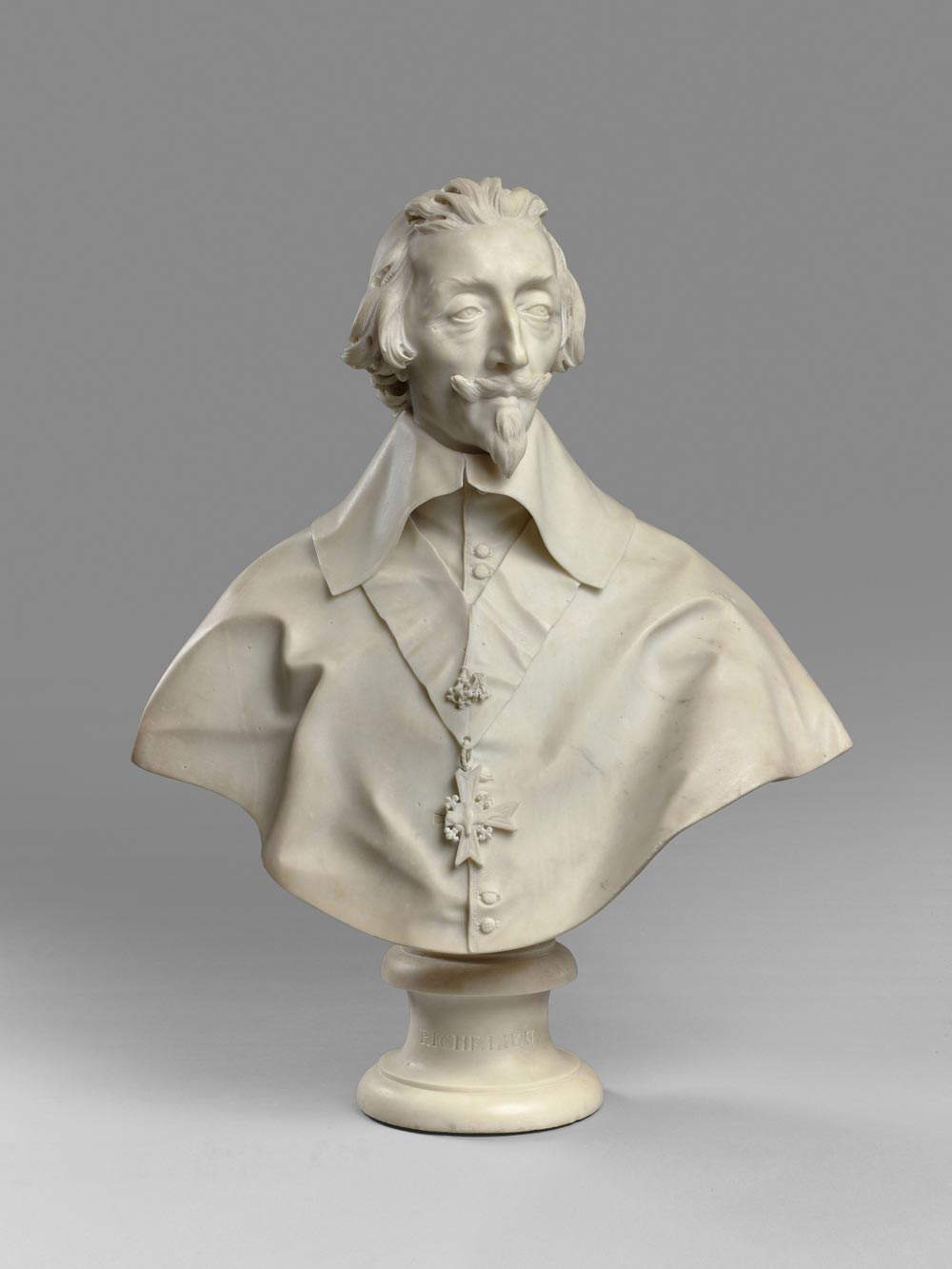
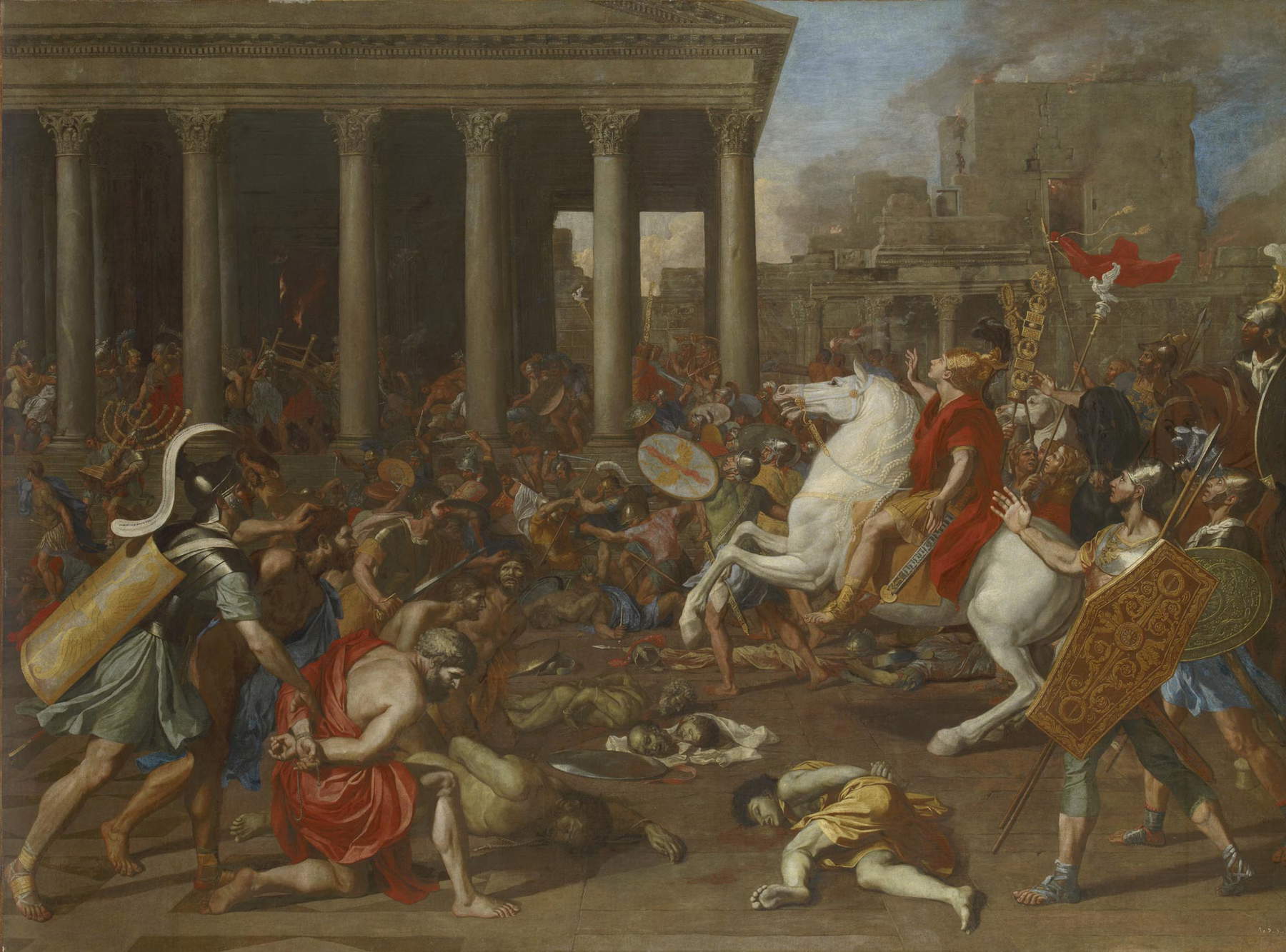
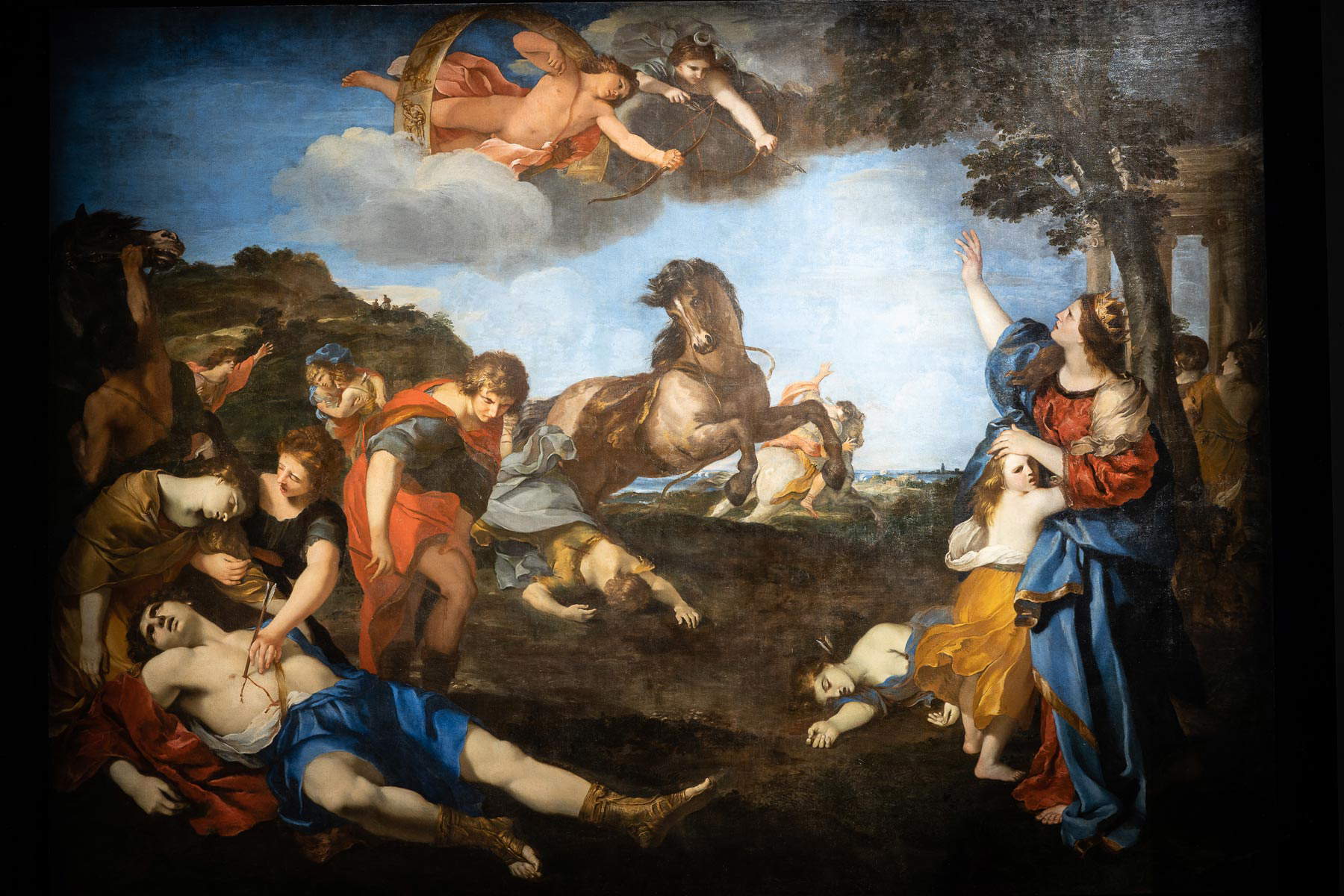
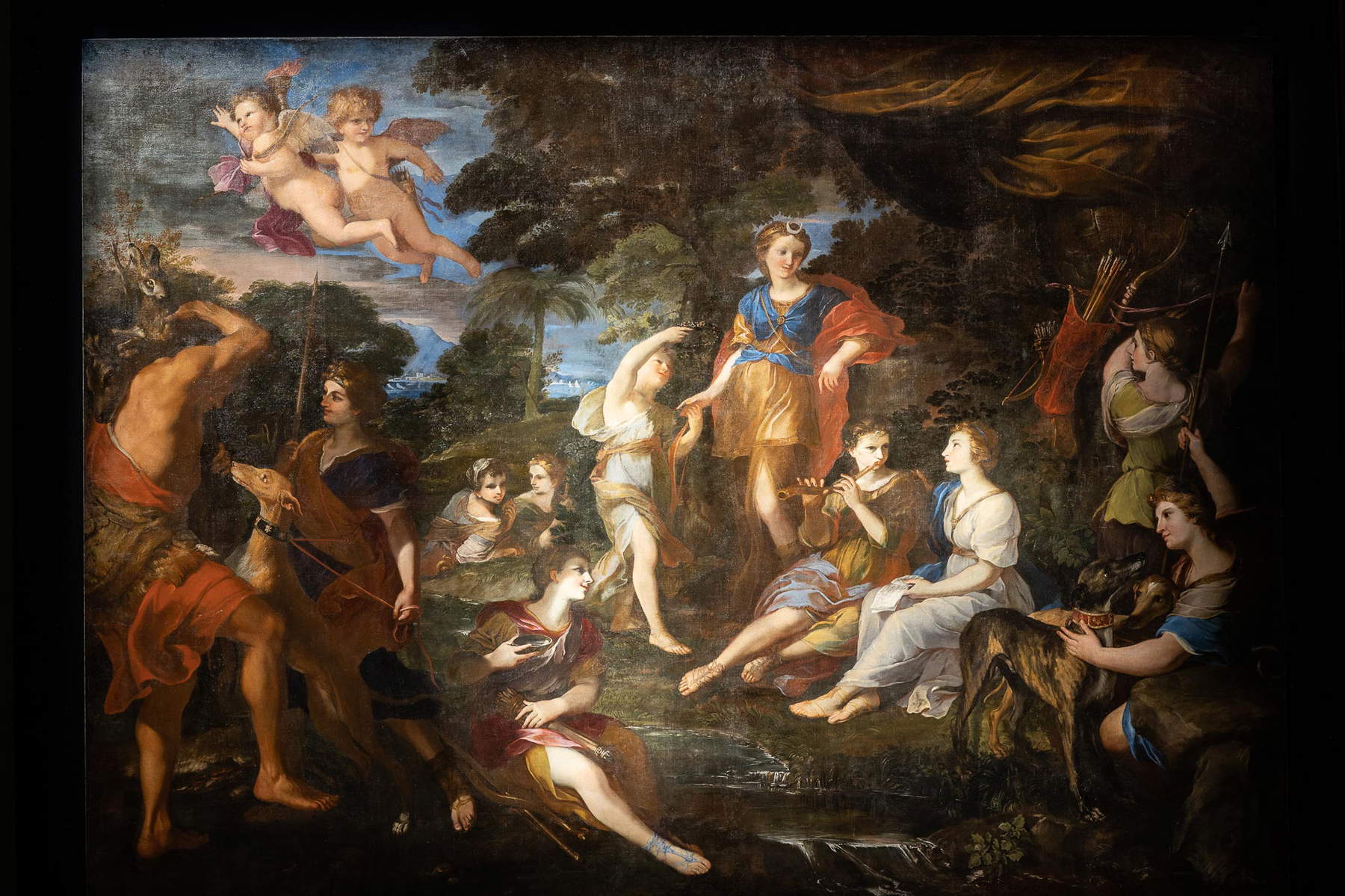
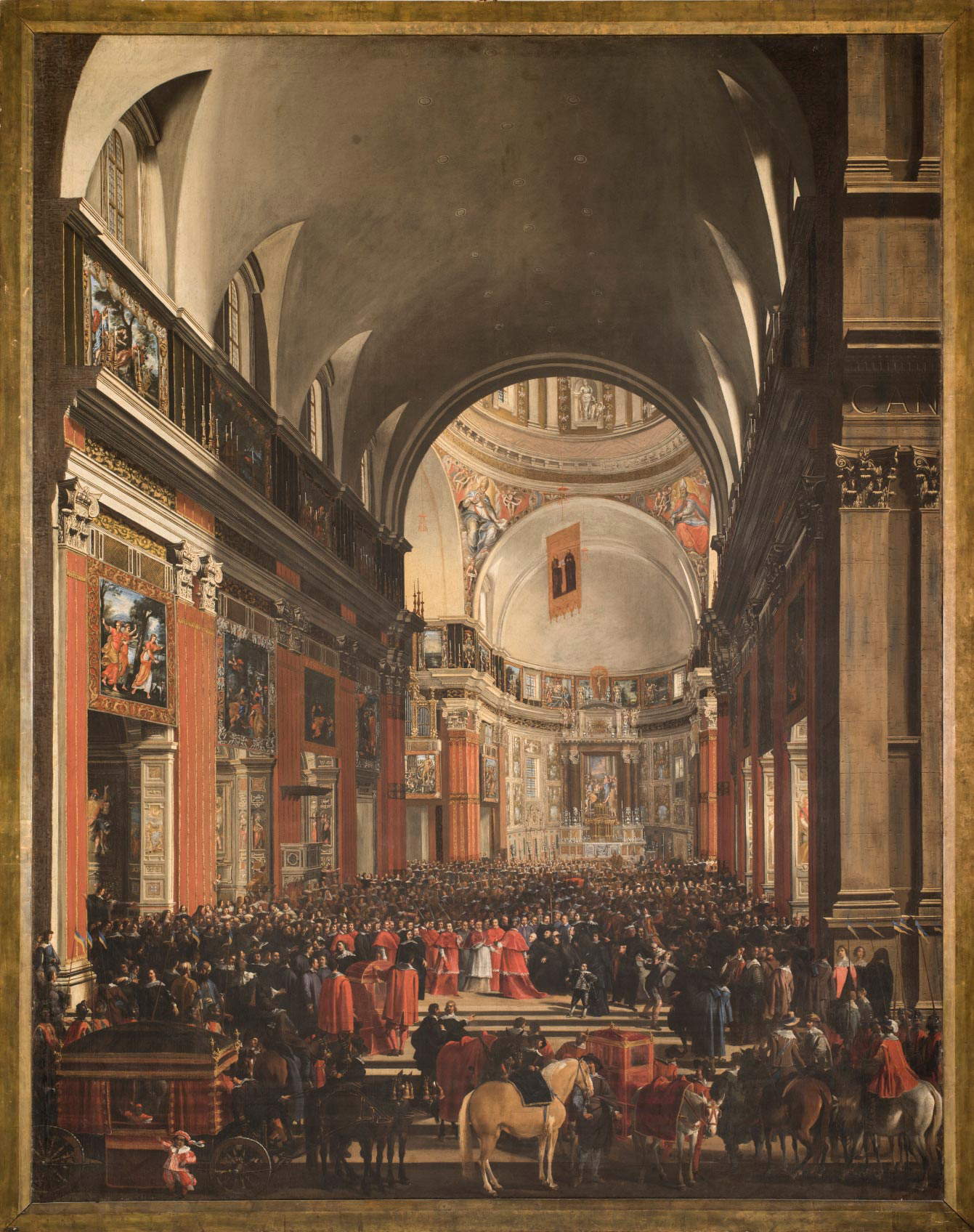
The end of the exhibition leads one to wonder what, in concrete terms, were the results of the pervasive propaganda of Urban VIII’s long pontificate. The historical judgment on the two decades of Barberini’s rule is complex, but already Ludwig von Pastor, who was among the first to study the years of Maffeo Barberini in all respects, had written that Urban VIII “left to the Romans the detestable memory of a pope manipulated by his family, greedy for money and always ready to impose taxes while, for the Europeans of the time engaged in the Thirty Years’ War, he embodied the figure of the traitor in all fields” (this was the name he had earned with his foreign policy, marked by his closeness to France and disguised, however, under the disguise of an apparent neutrality). The same scholar, however, also recognized his extraordinary merits in terms of cultural policy: with Urban VIII, Rome became the main center of cultural production in all of Europe, the capital of art that imposed on the world the style that the pope’s artists had developed in the enterprises he had commissioned, the city of letters and sciences. This was probably the main legacy of Pope Barberini: a propaganda that gave him little political result, but which had the effect of marking Rome indelibly, shaping it almost in the likeness of a pontiff who had been a poet and a man of letters, who had nurtured sincere interests in science (despite the fact that his positions, from the progressive ones of his youth, were later maintained on a strict traditionalism) and who loved the arts, and elevating it to a model cultural capital. The reasons for the success of Barberini’s cultural project, which touched on all fields, lie above all in the pontiff’s ability to have succeeded in involving a large group of artists, intellectuals, scientists and musicians in his action, and moreover to have procured the best.
The limits of Urban VIII’s action, however, lie mainly in the objectives to which the arts were subordinated within the framework of his political project. This is effectively summarized by Maurizia Cicconi in the catalog where, taking up an idea of Schütze (proposed in a 1998 essay) who had advanced a comparison between Urban VIII and Julius II, she states that Maffeo Barberini could be called “thelast great pope of the Renaissance,” on the one hand because he was intent on affirming the role of the Church by means of a cultural primacy, and on the other because of his desire to propose himself as a peacemaker pope, capable of restoring harmony to Christendom. However, the two popes were separated by a century of clashes, wars, and divisions: in between, to say, there had been the Protestant Reformation. To cut a long story short: nothing would go back to the way it was. And in this sense one can look at Urban VIII as an essentially reactionary pontiff, ill-prepared to face the challenges that modernity posed to the papacy, and thus destined to lose on virtually all fronts: the outcome could only be a progressive loss of international relevance of the Papal States. The historical event, however, struggles to emerge from the exhibition itinerary: the catalog then comes to the rescue, an excellent tool that much better achieves its goal of restoring to the public all the complexity of Urban VIII’s pontificate. If anything, the exhibition’s greatest achievement is to have brought back to Palazzo Barberini works that were here in Maffeo’s time and then ended up traveling around the world, thus offering the public a concrete idea of the magnificence of Barberini’s patronage.
Warning: the translation into English of the original Italian article was created using automatic tools. We undertake to review all articles, but we do not guarantee the total absence of inaccuracies in the translation due to the program. You can find the original by clicking on the ITA button. If you find any mistake,please contact us.




























